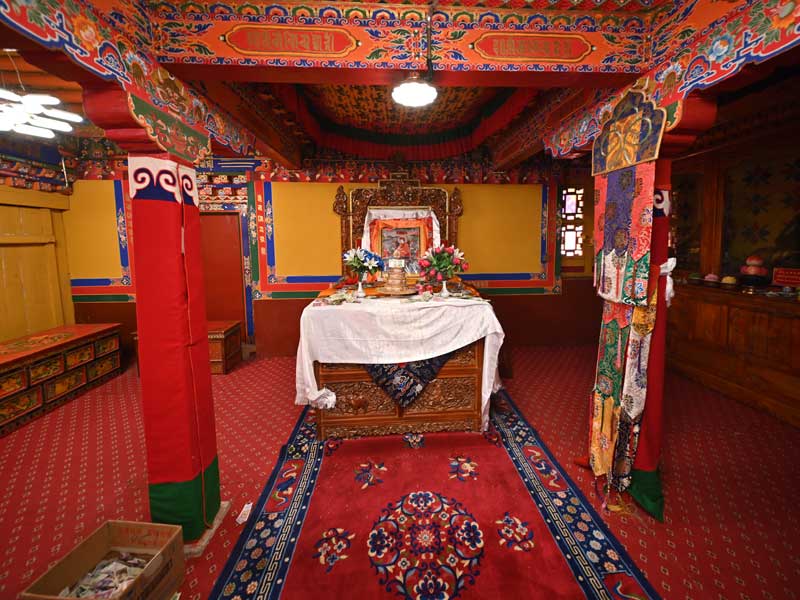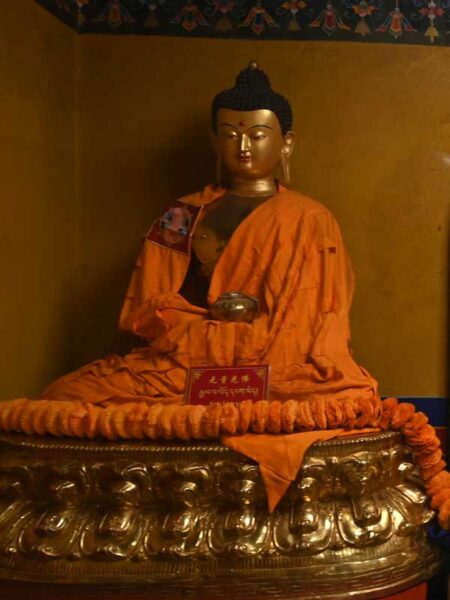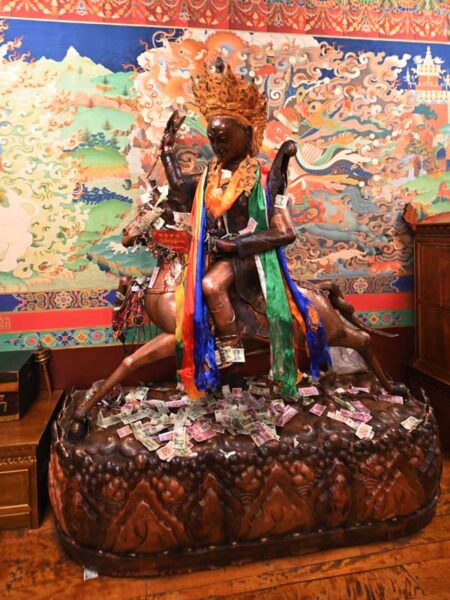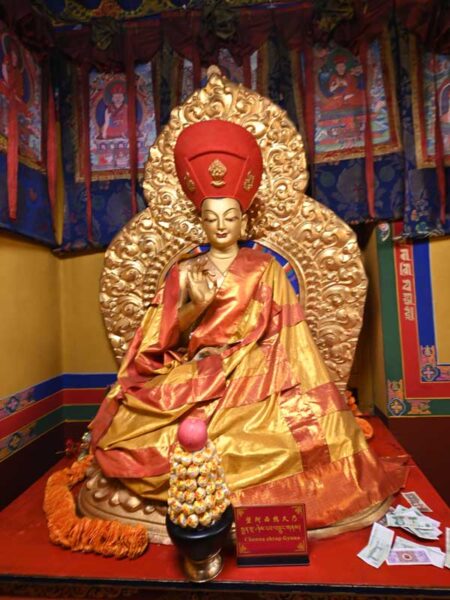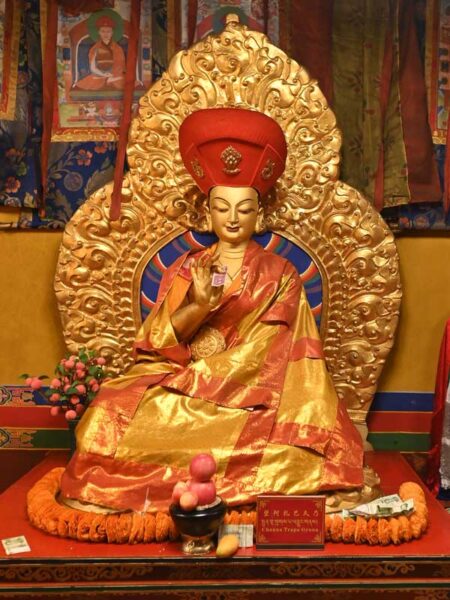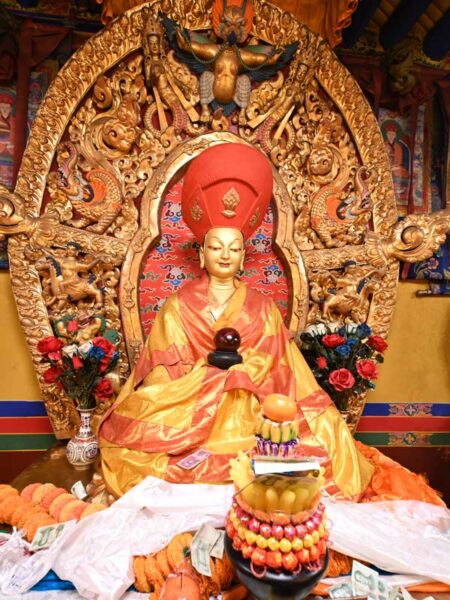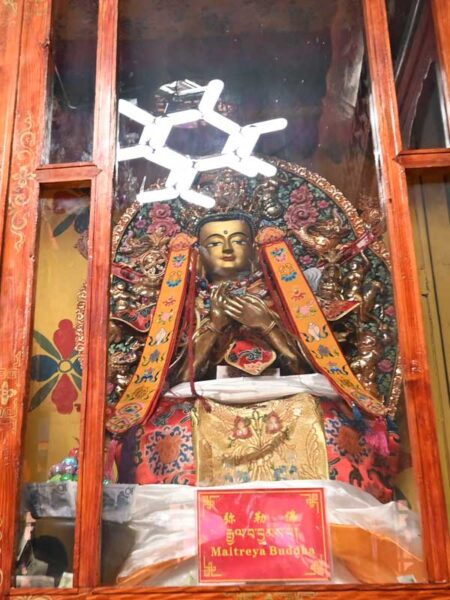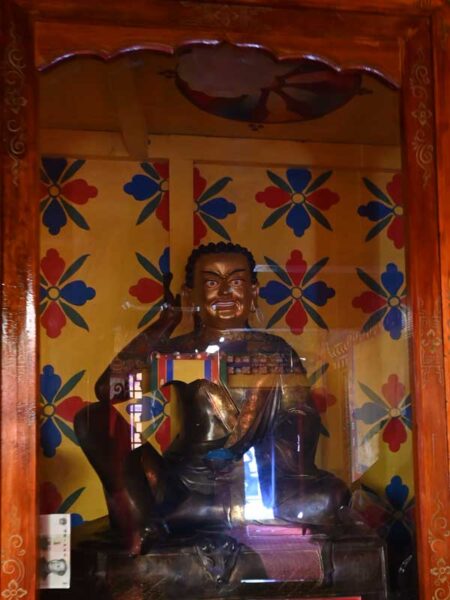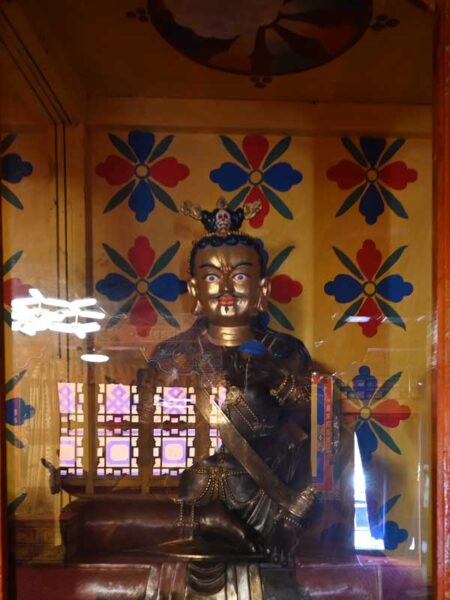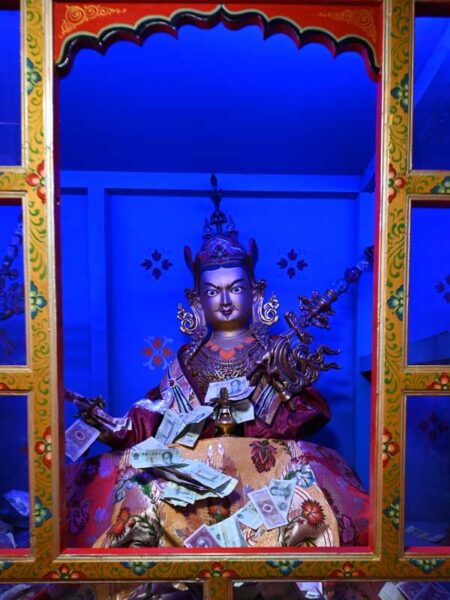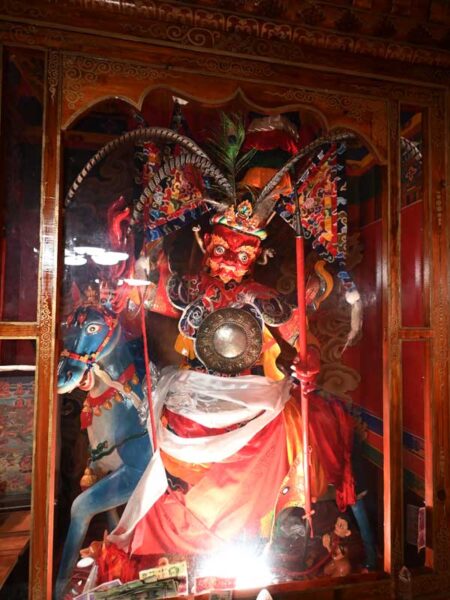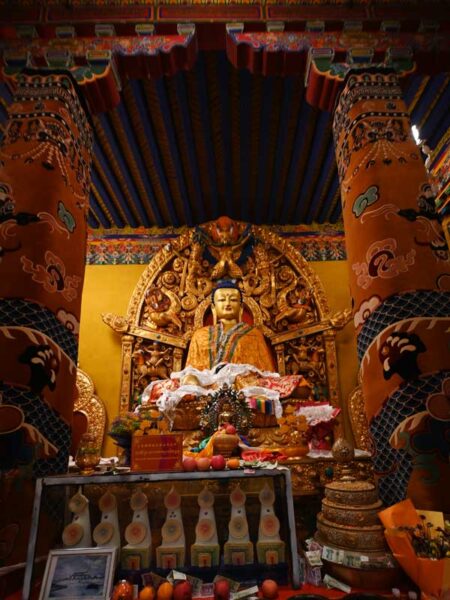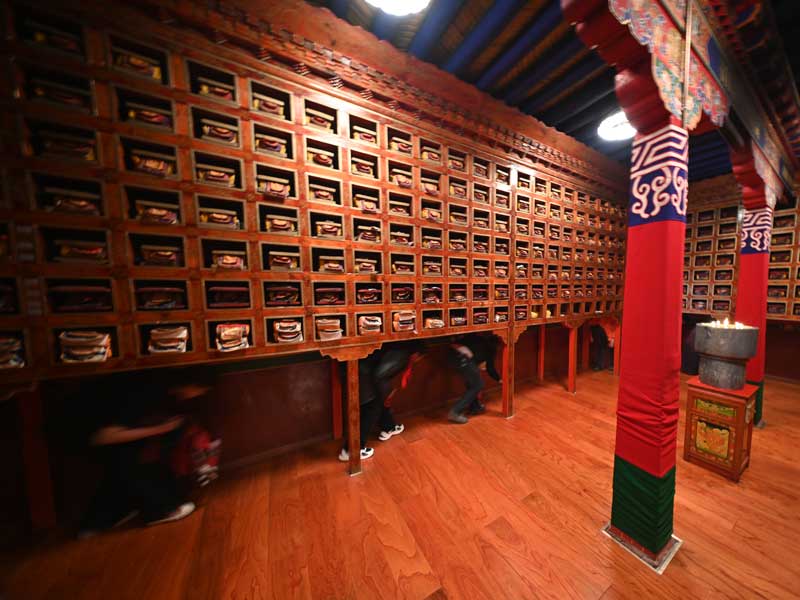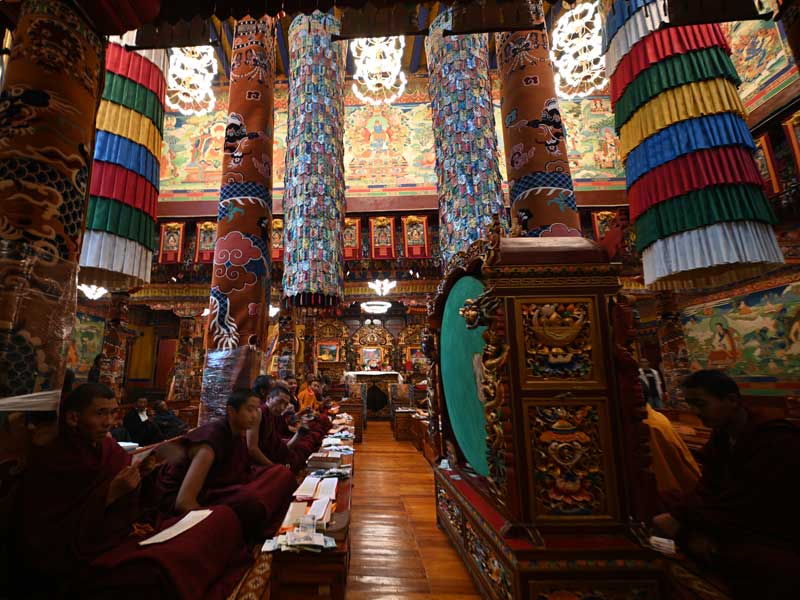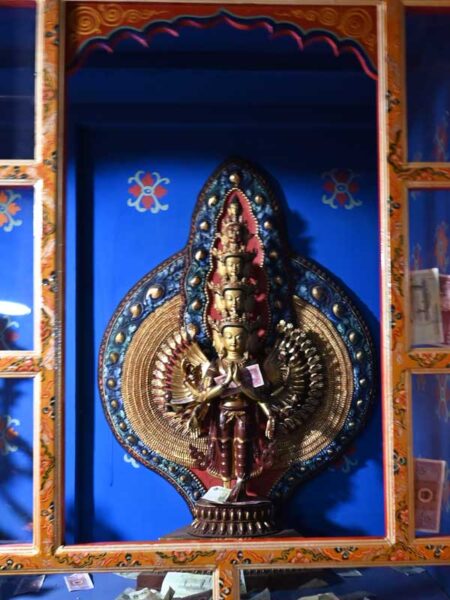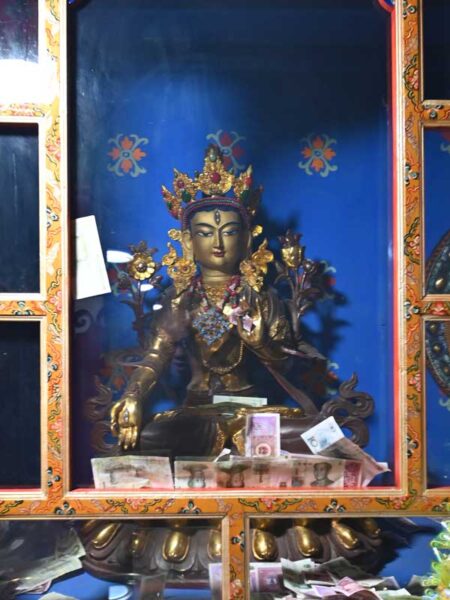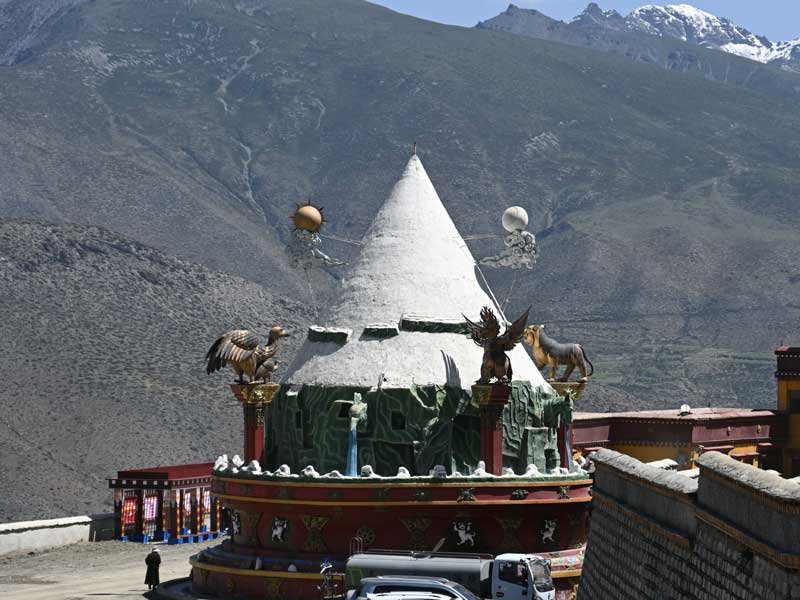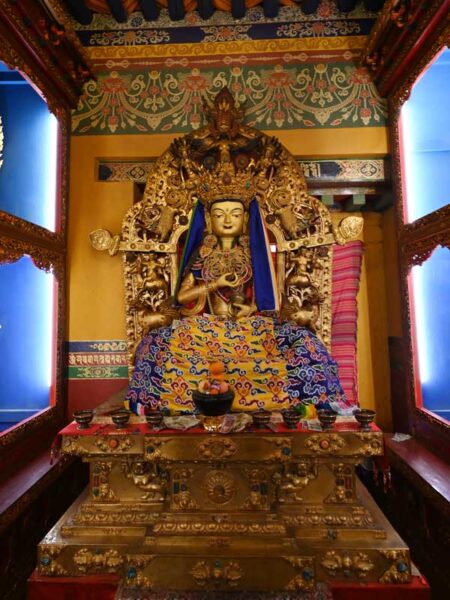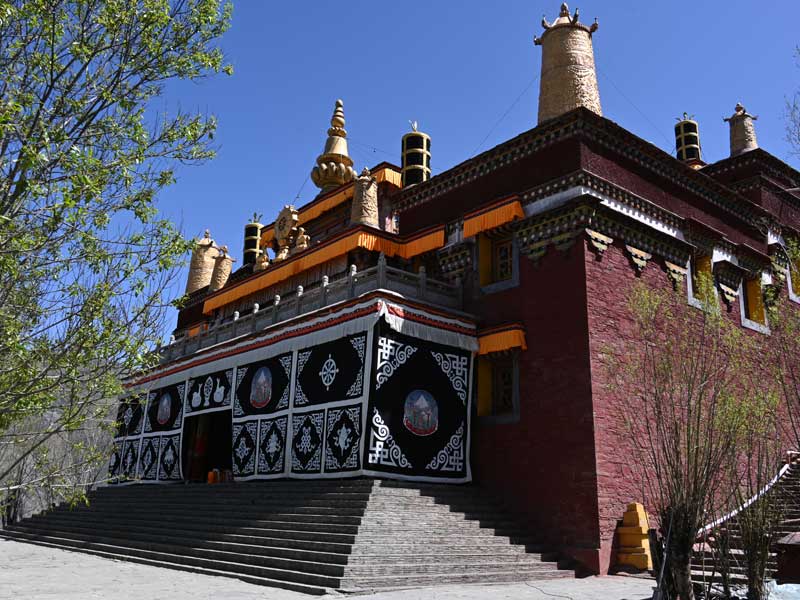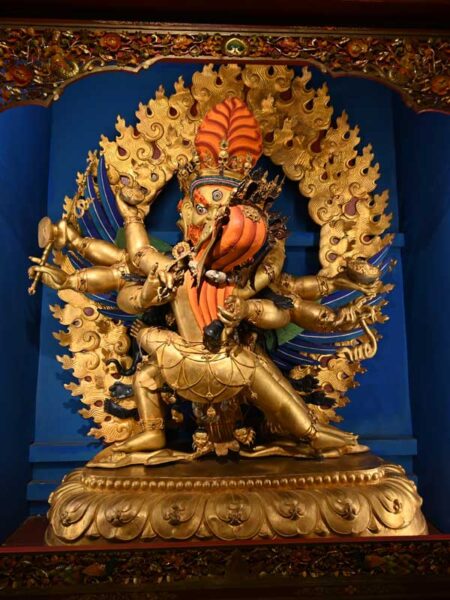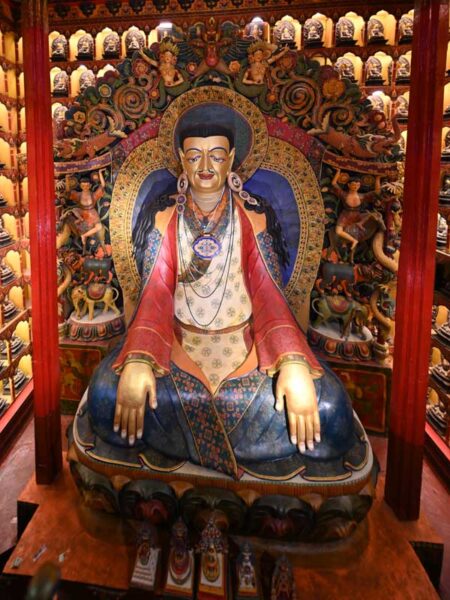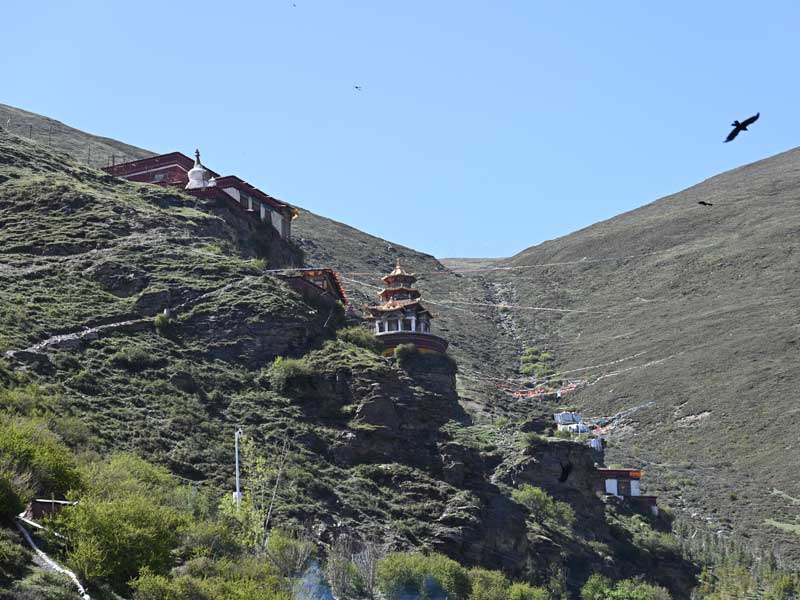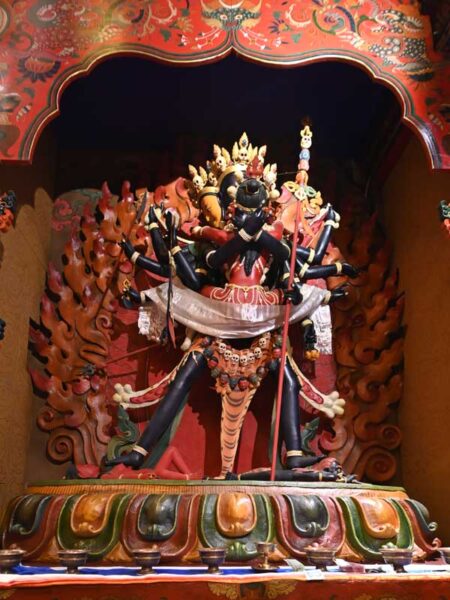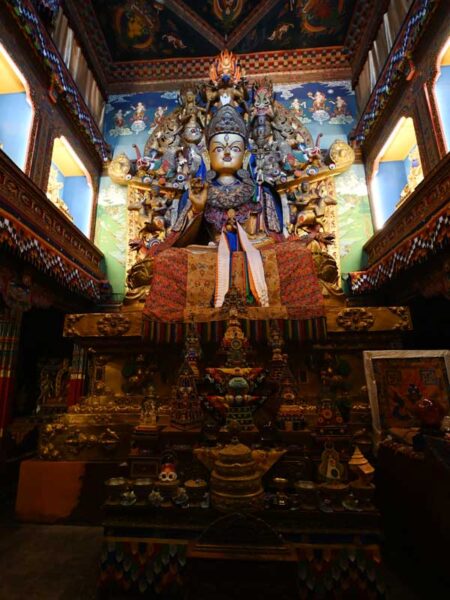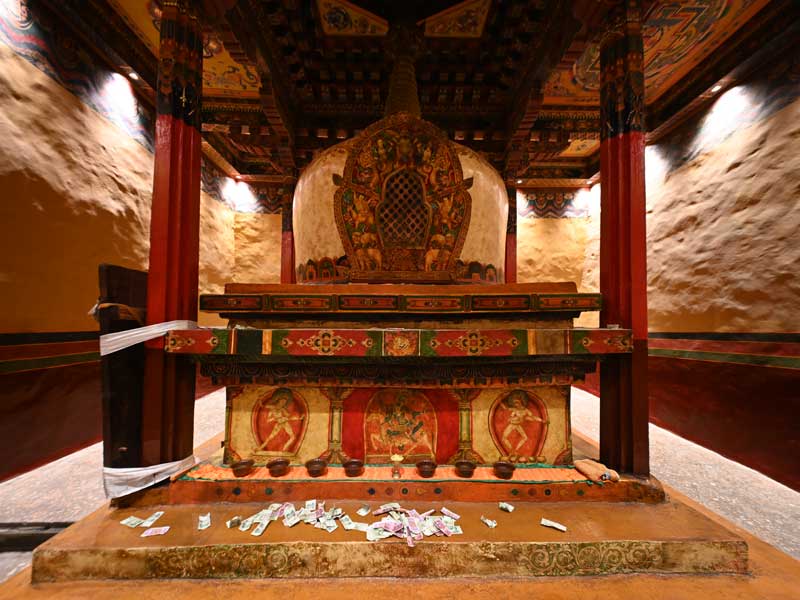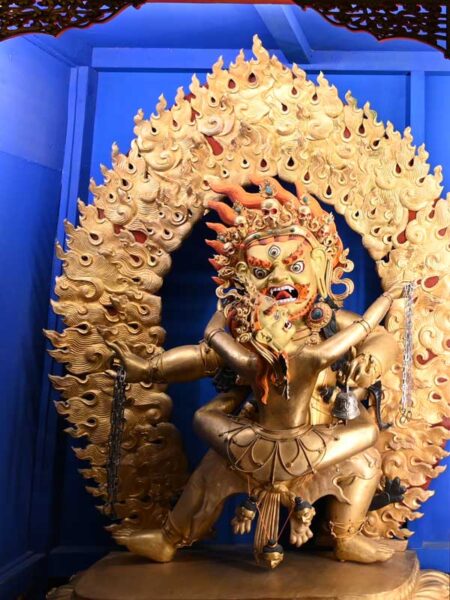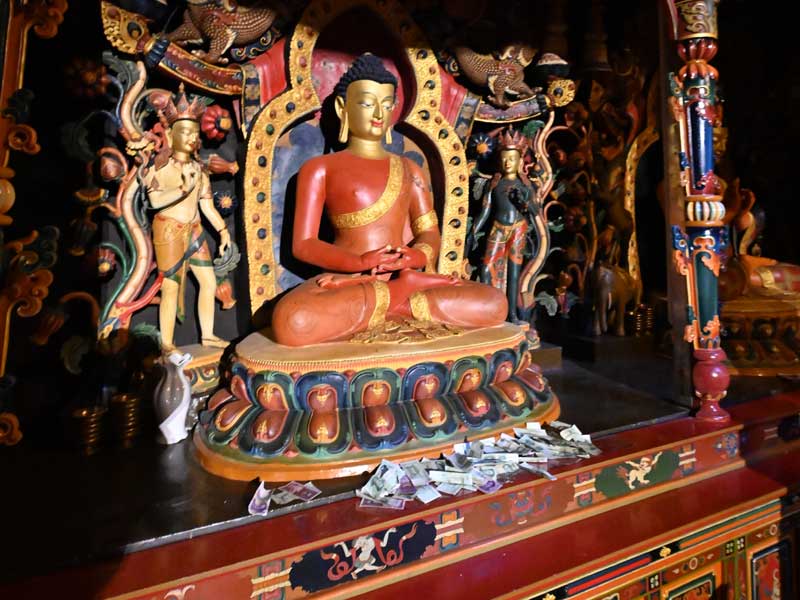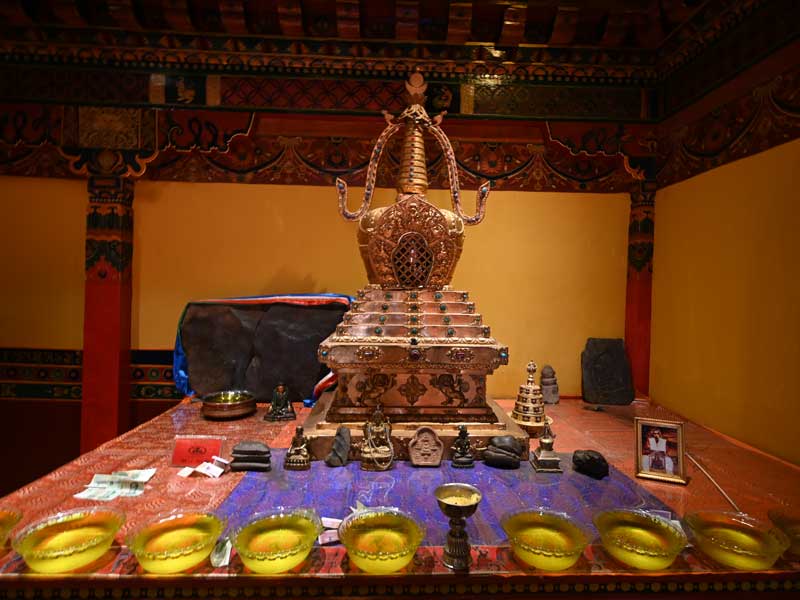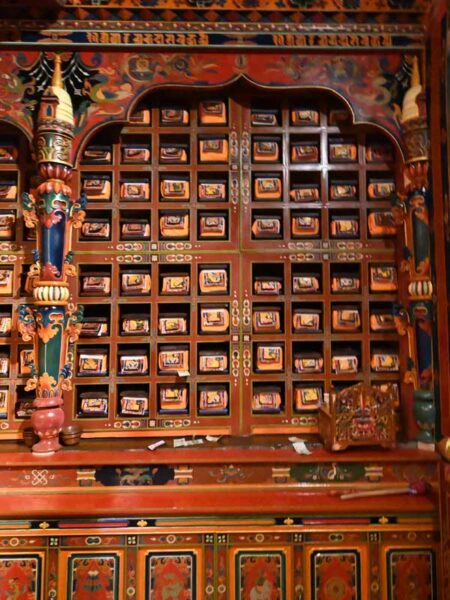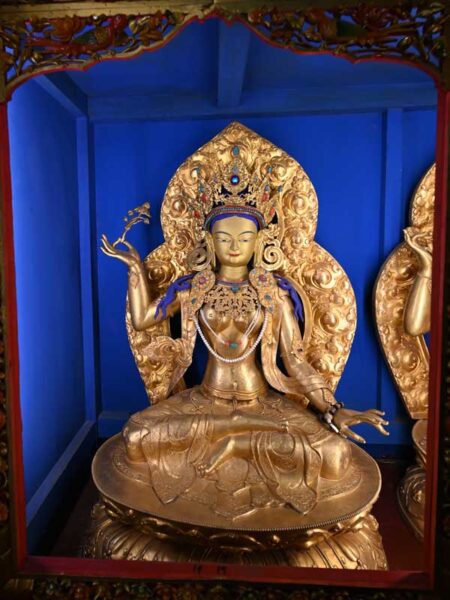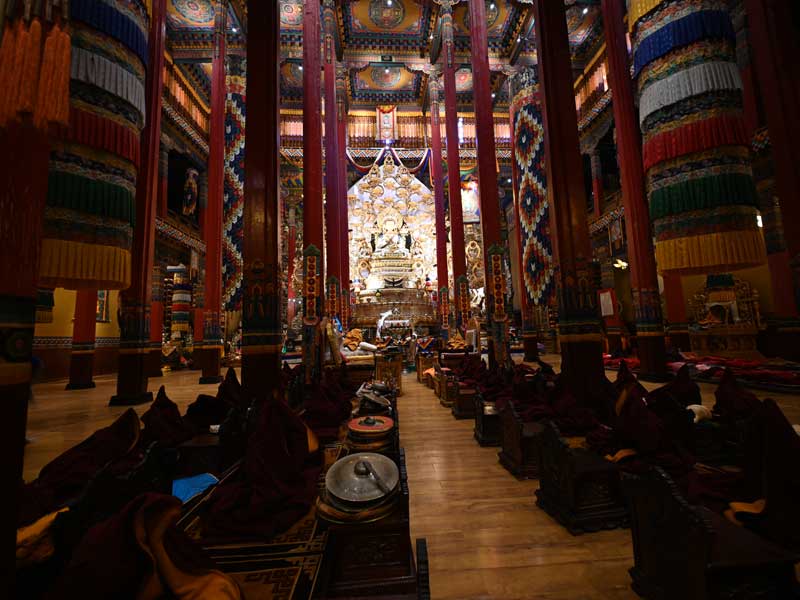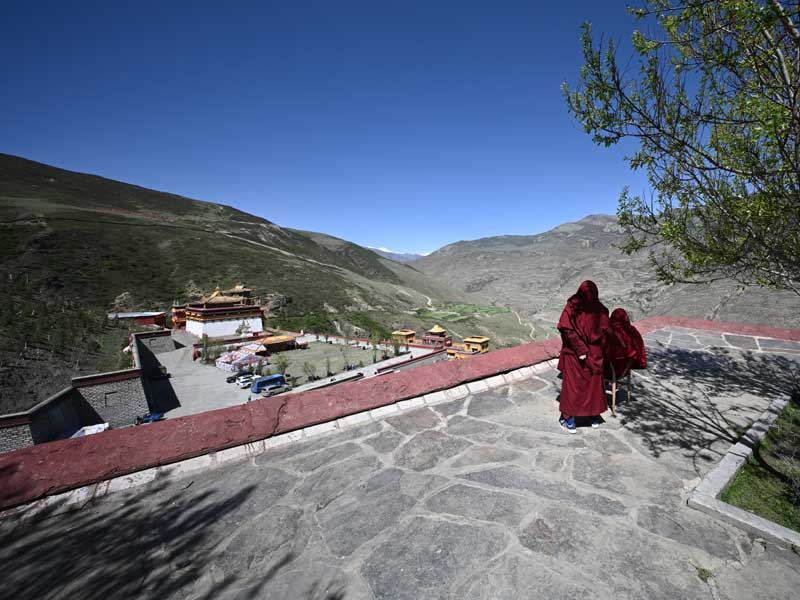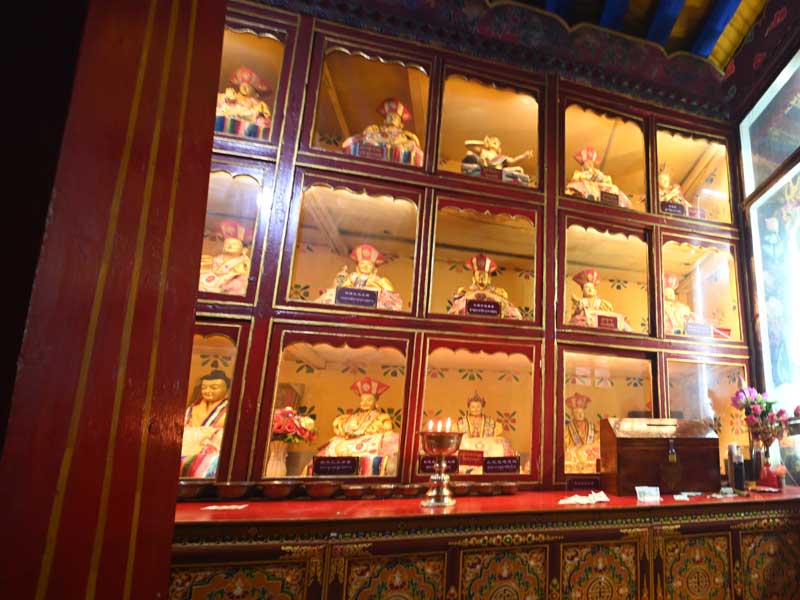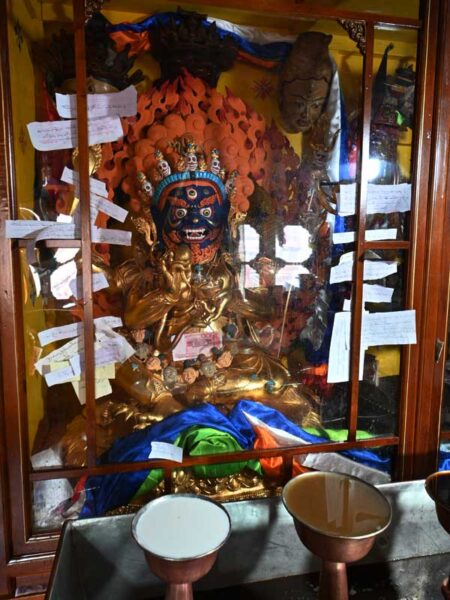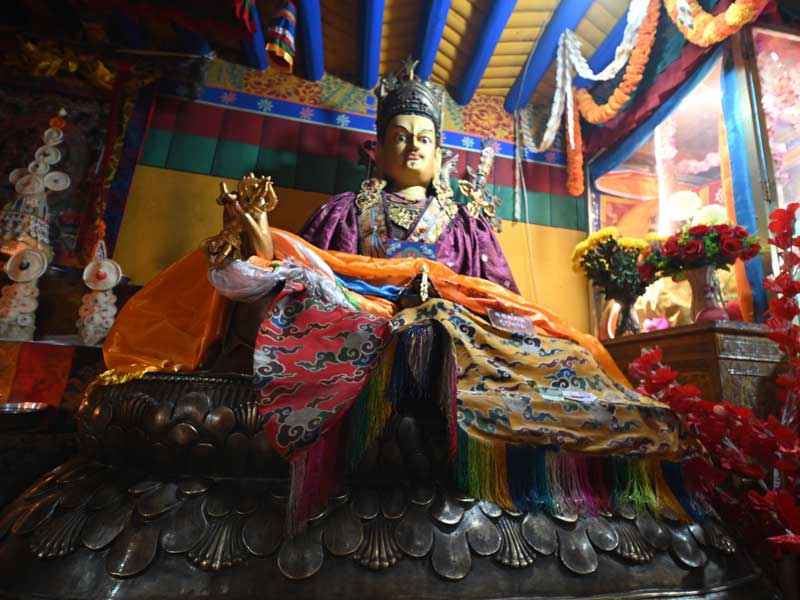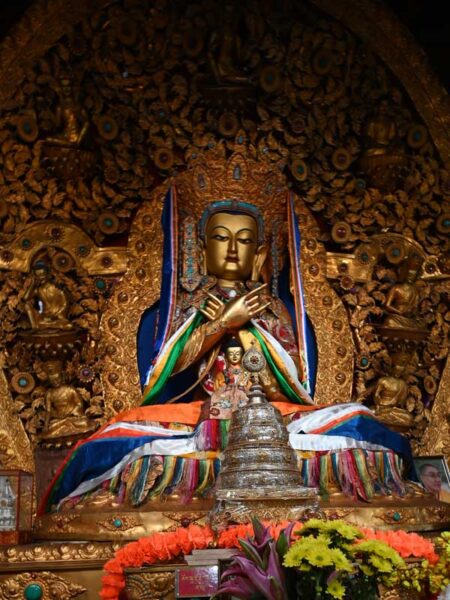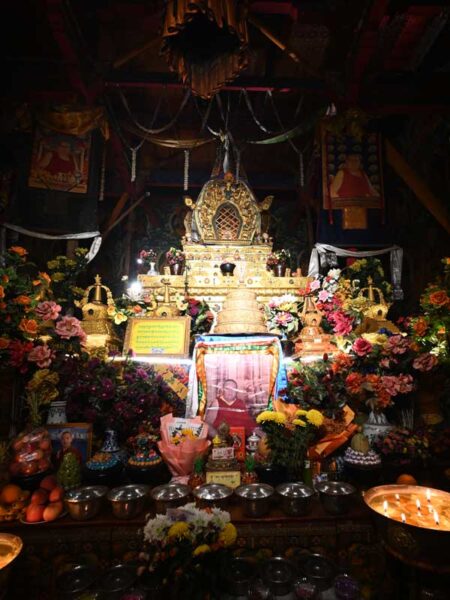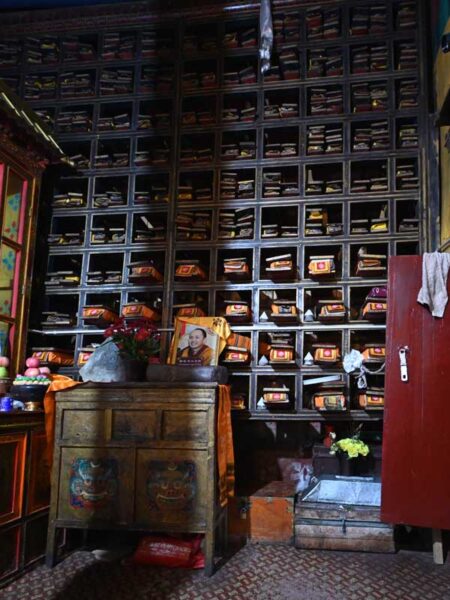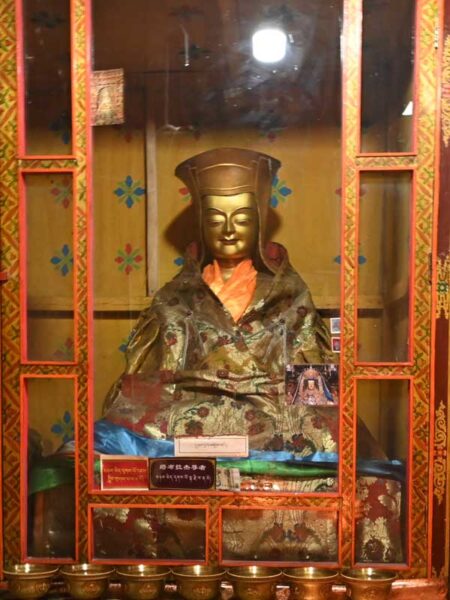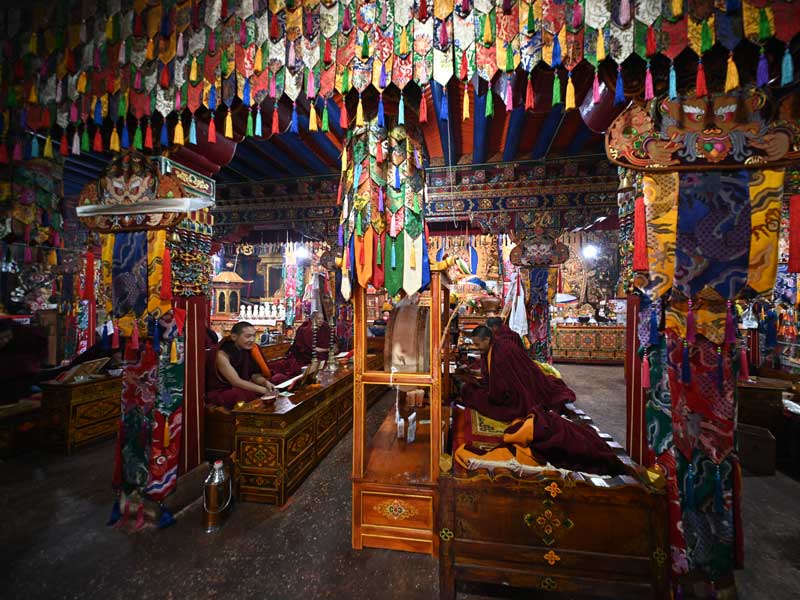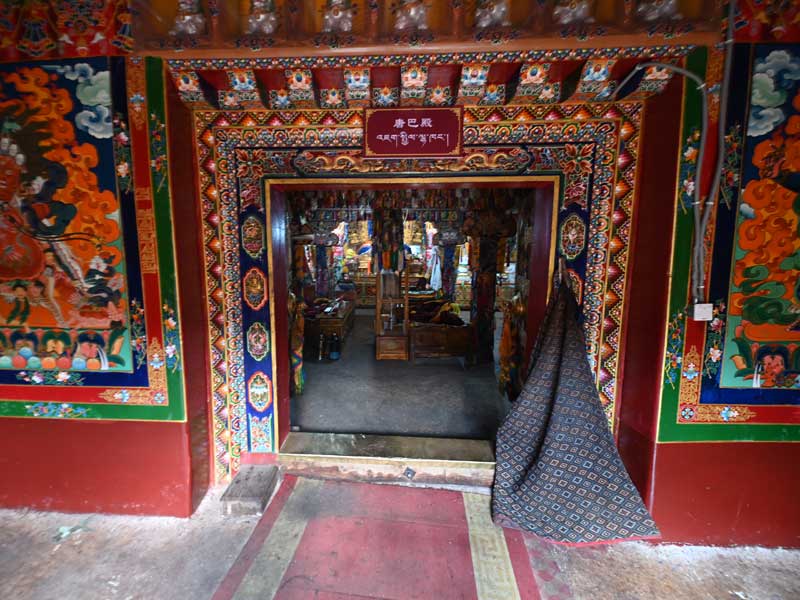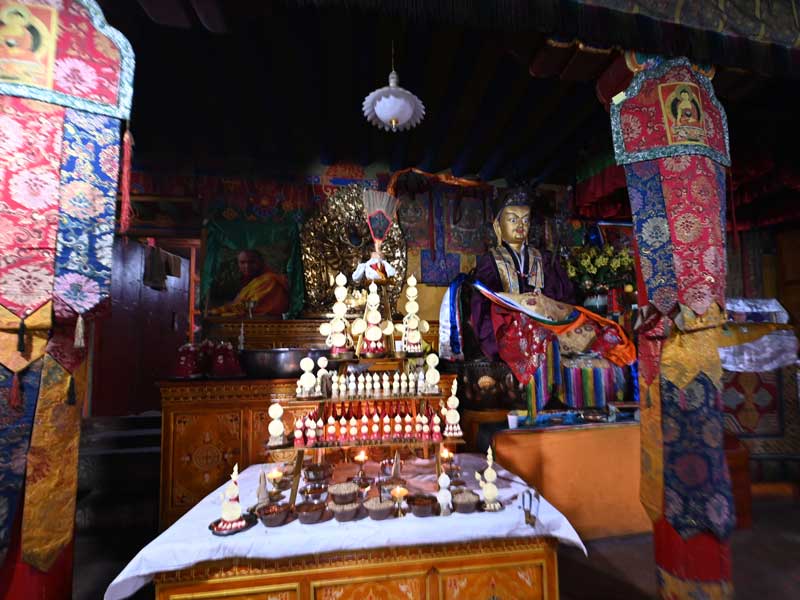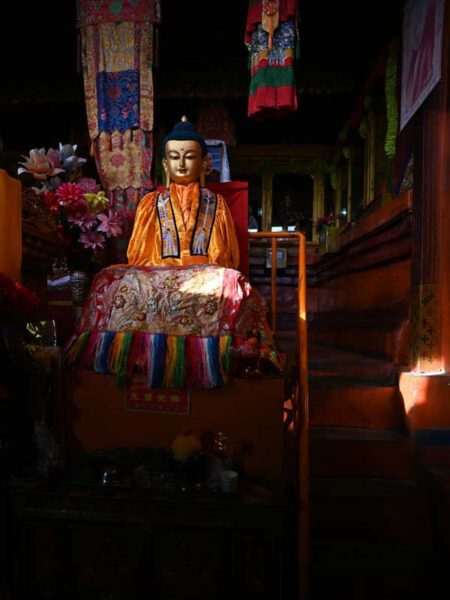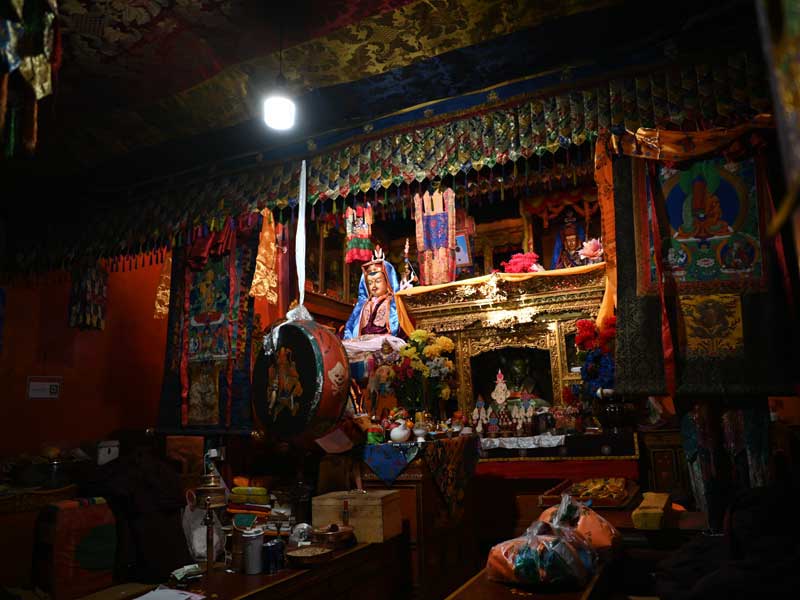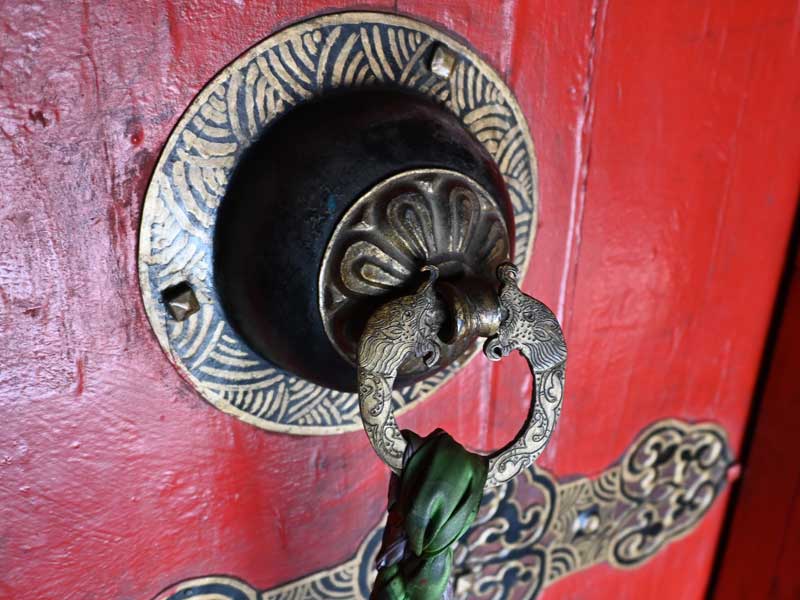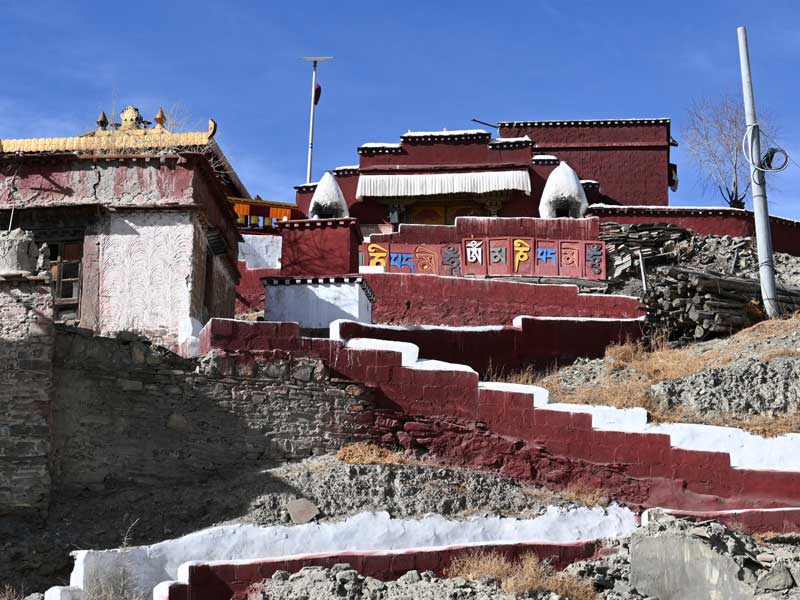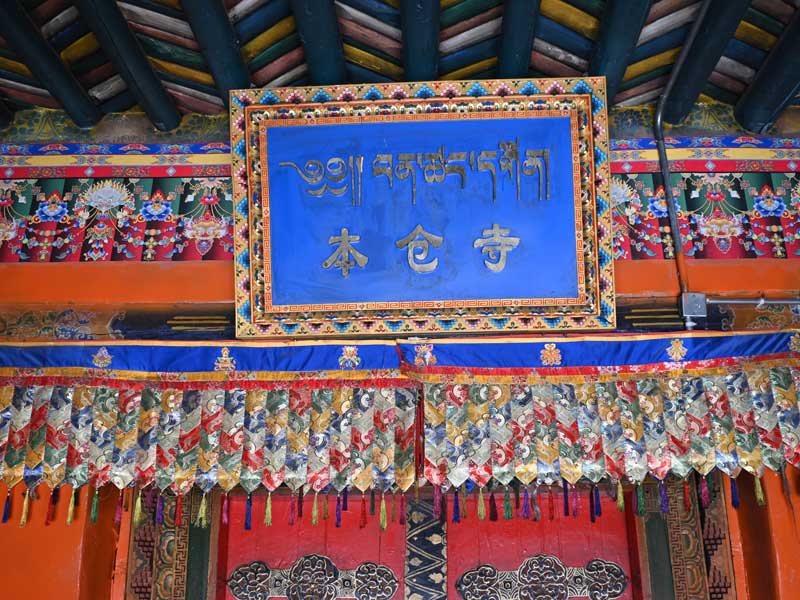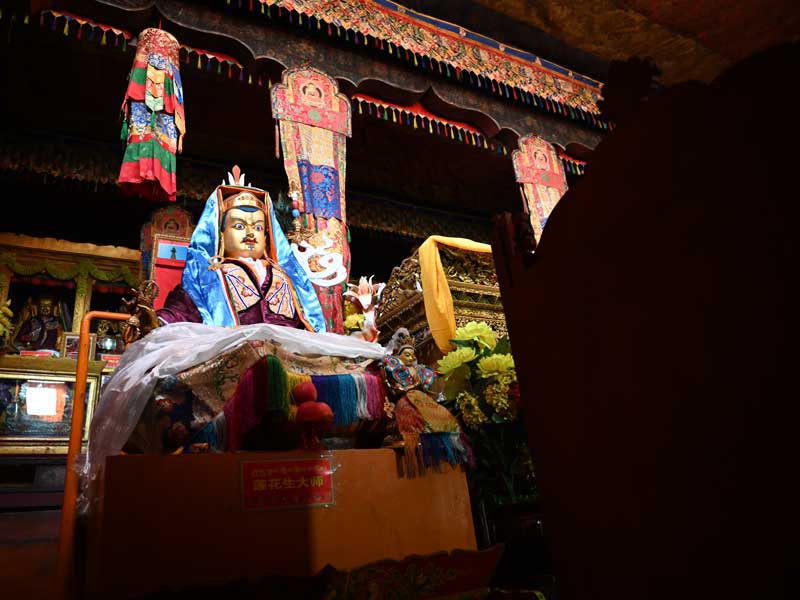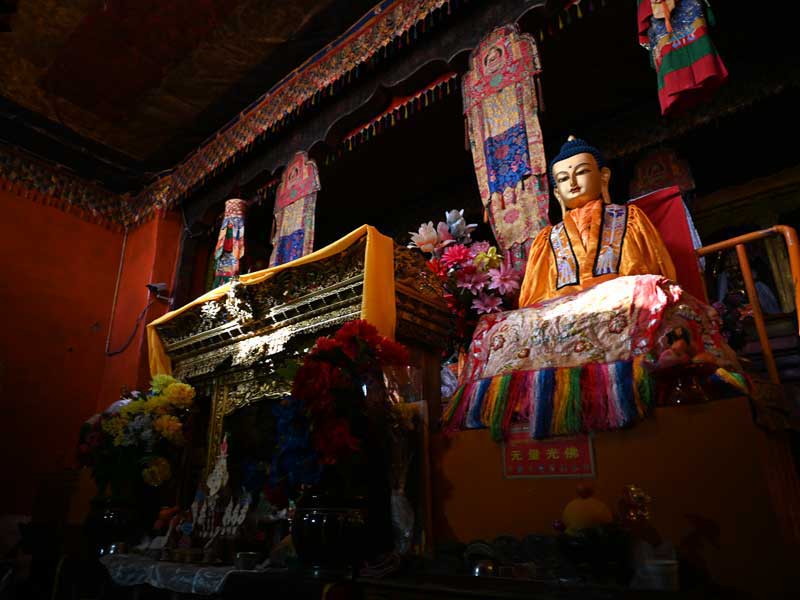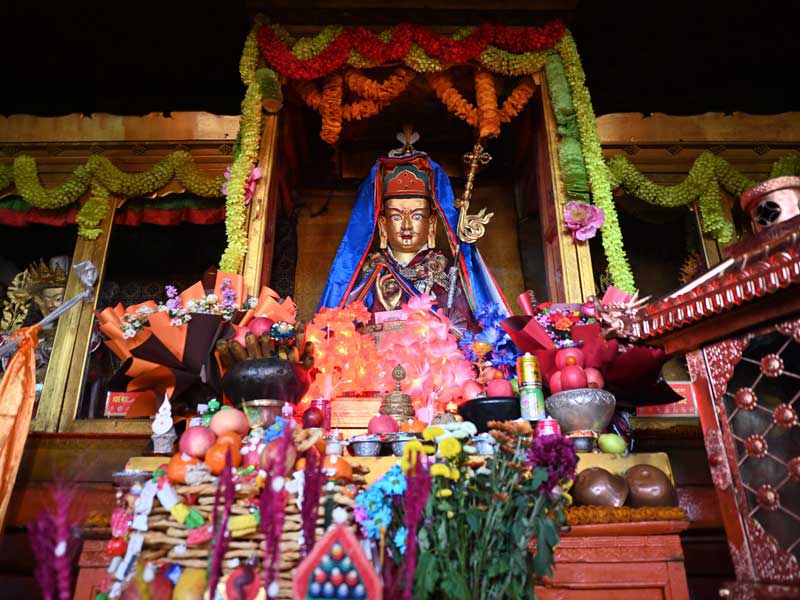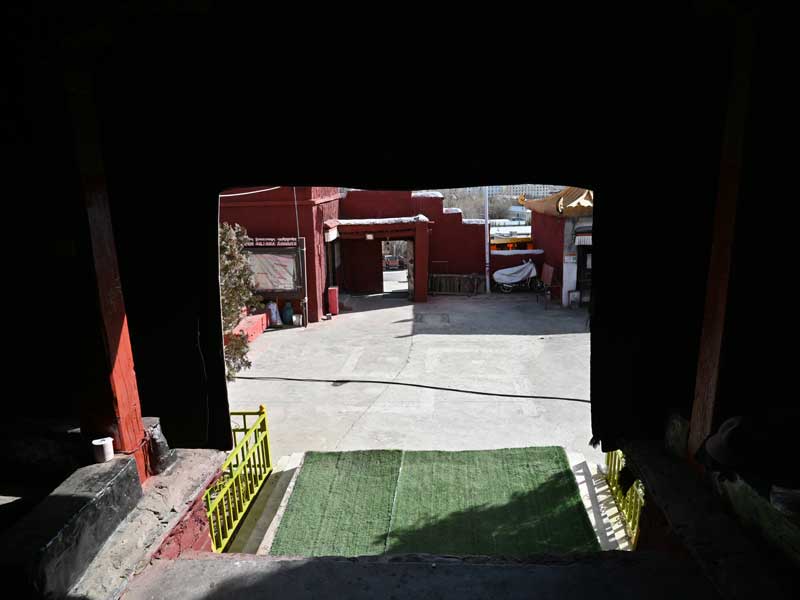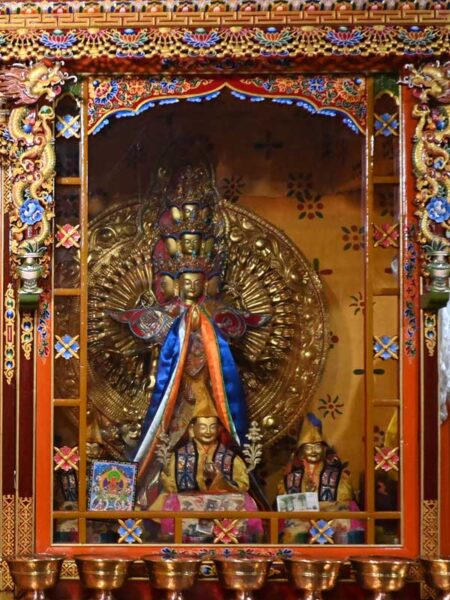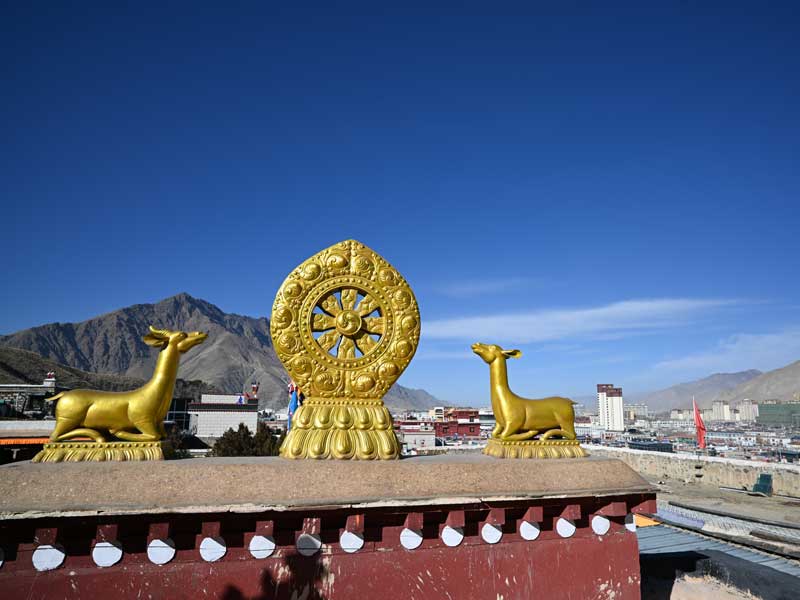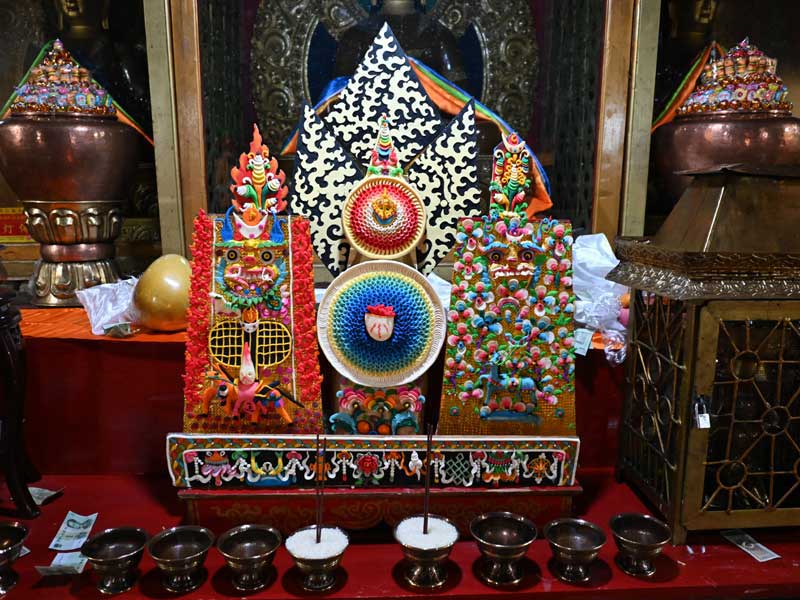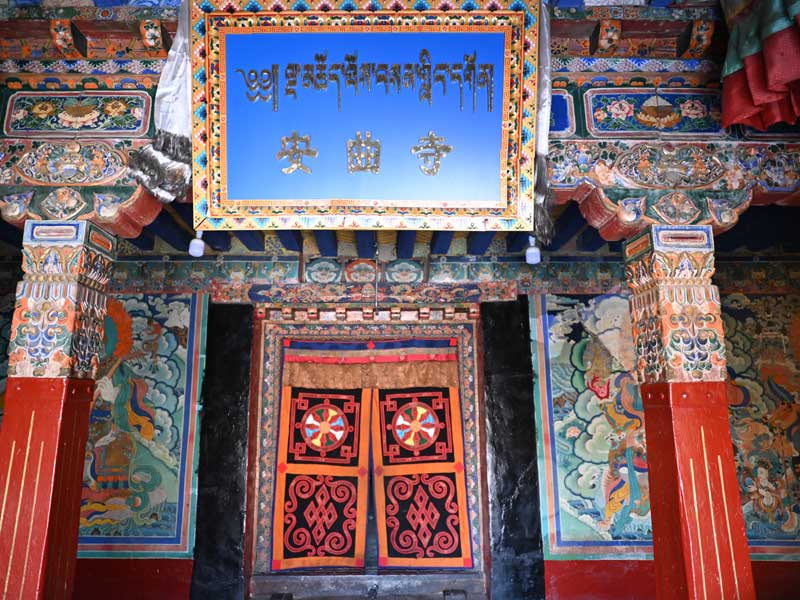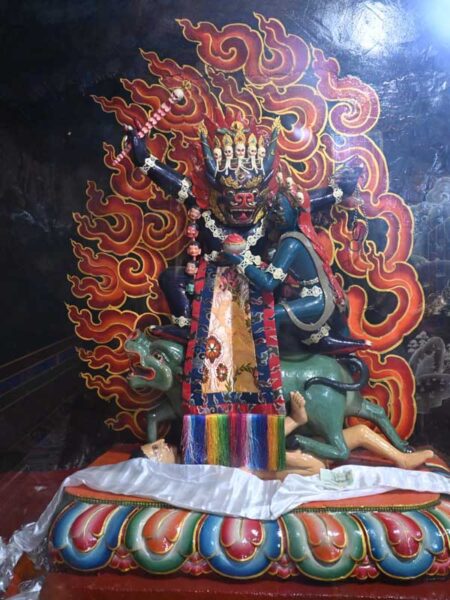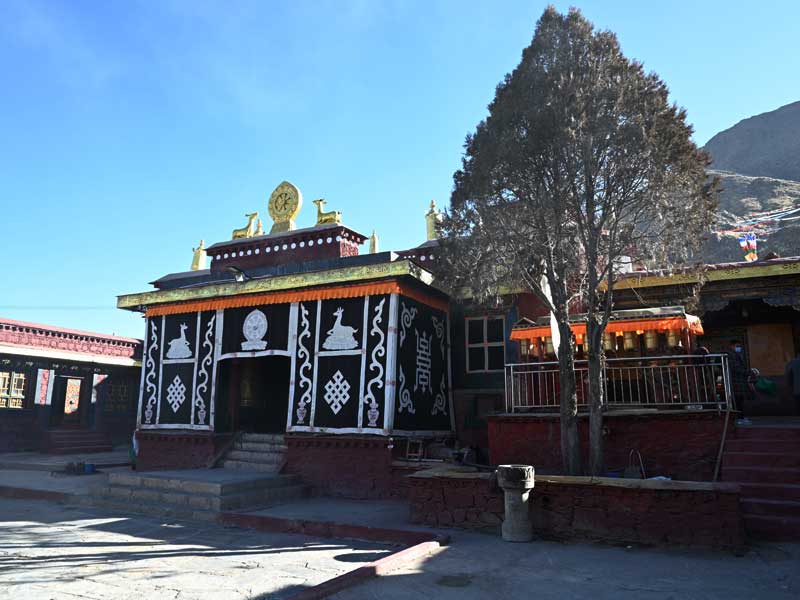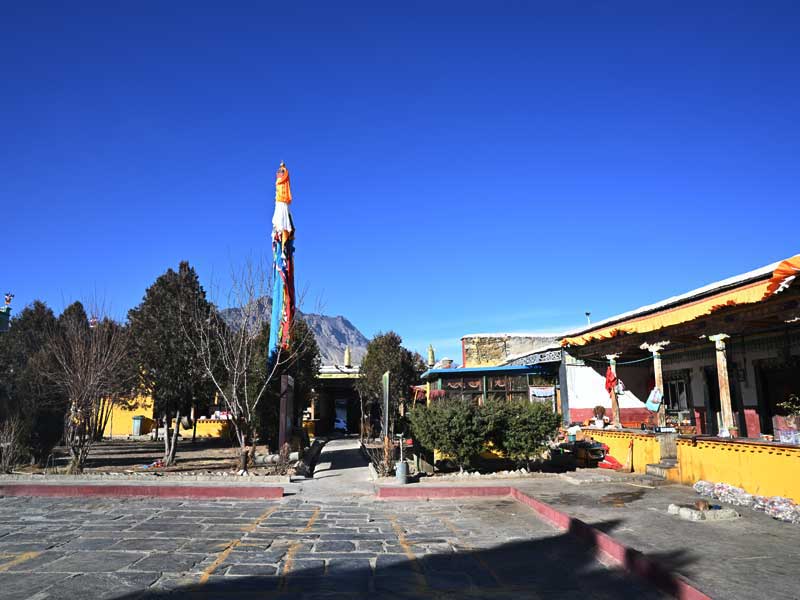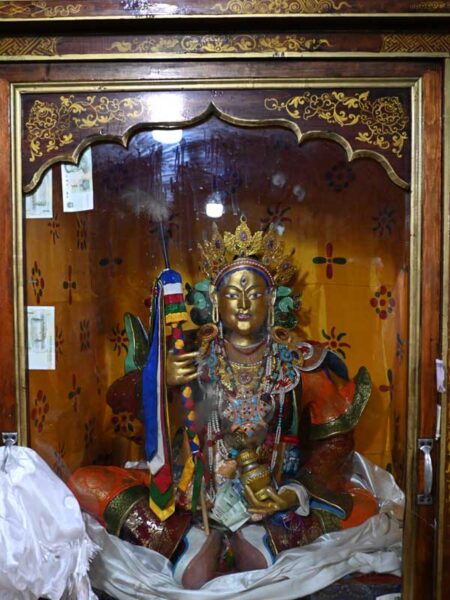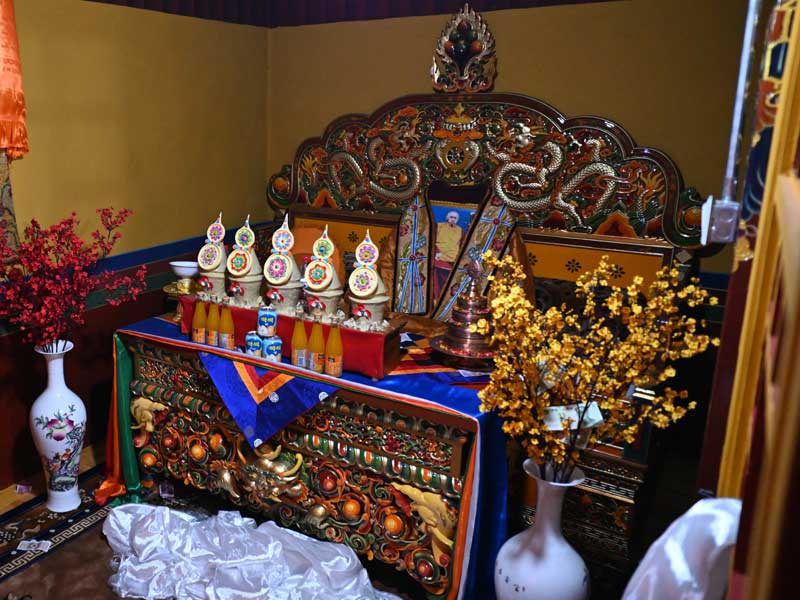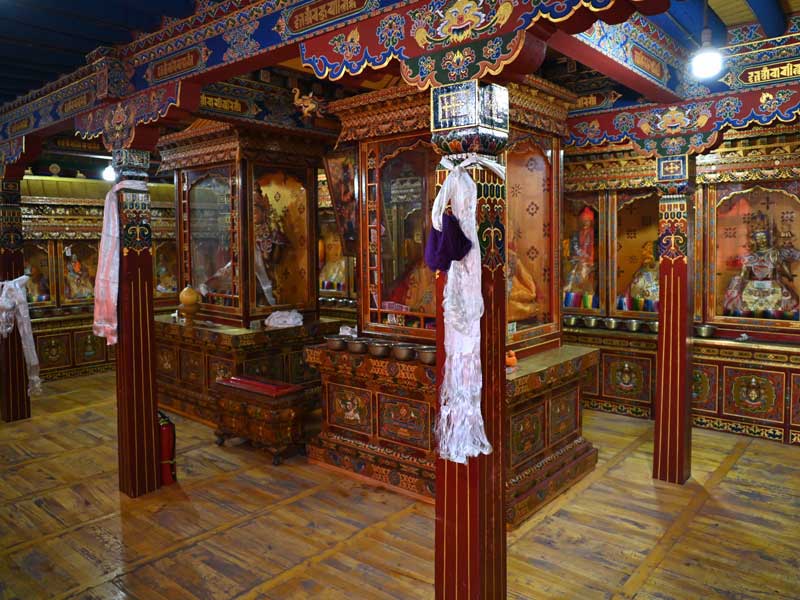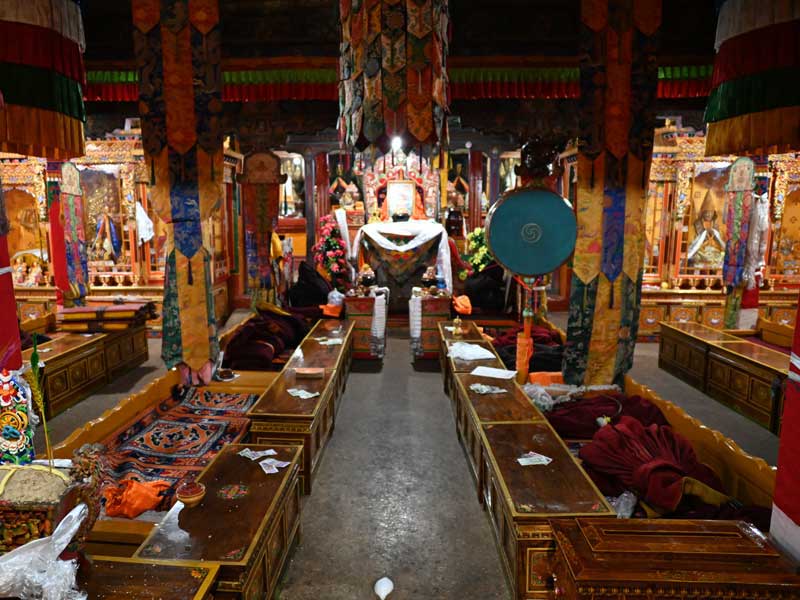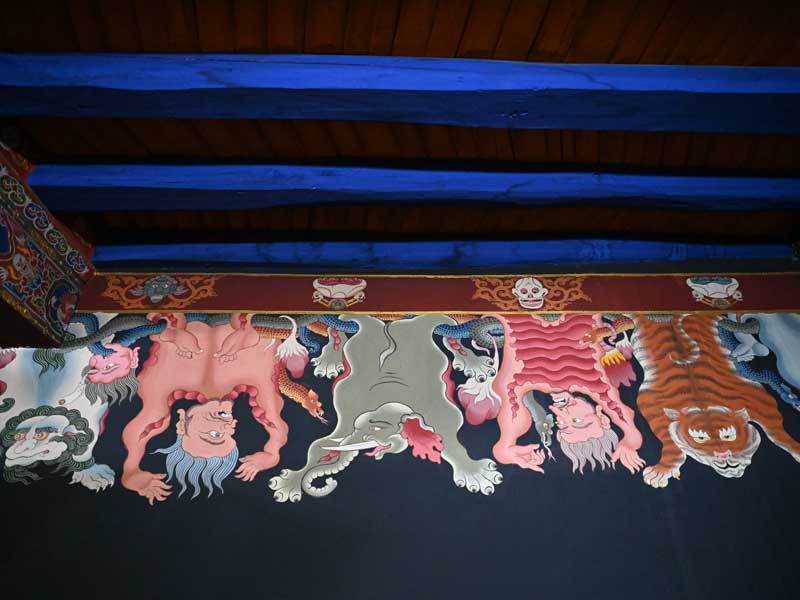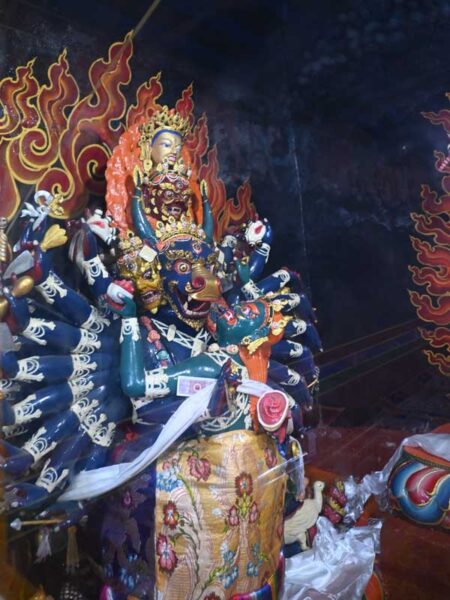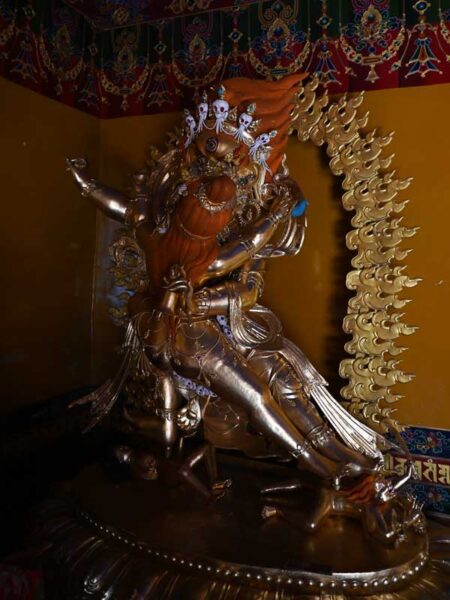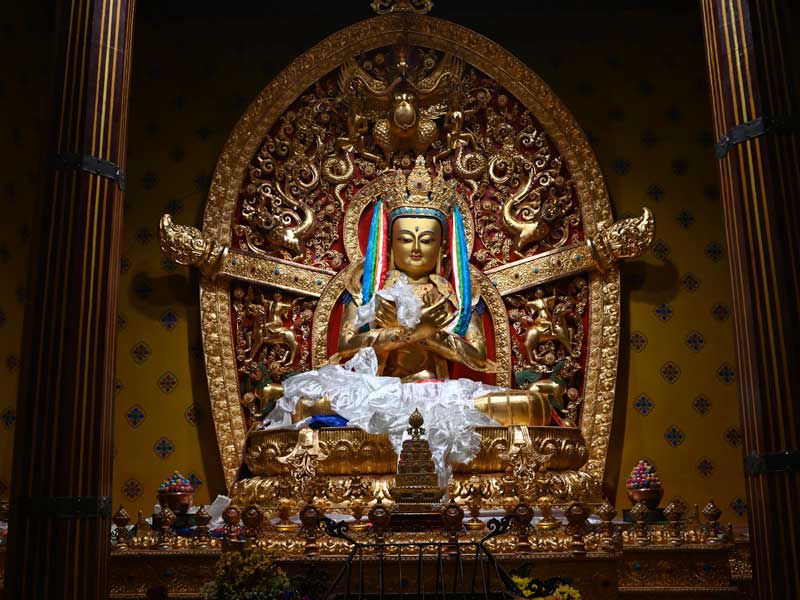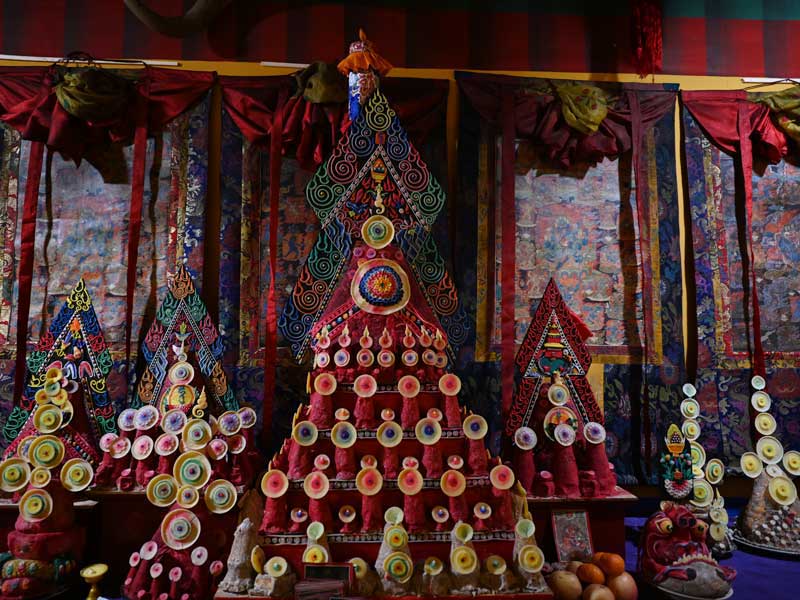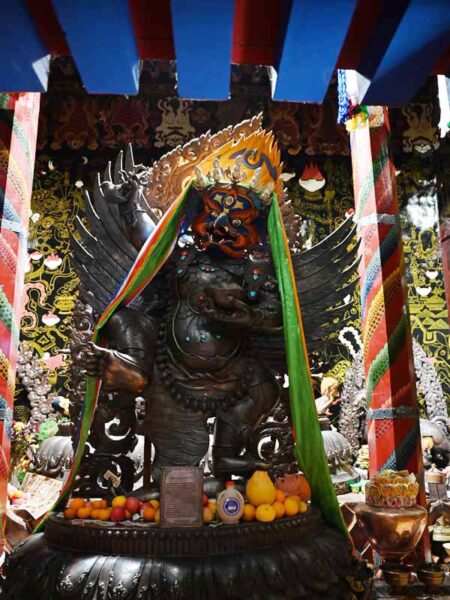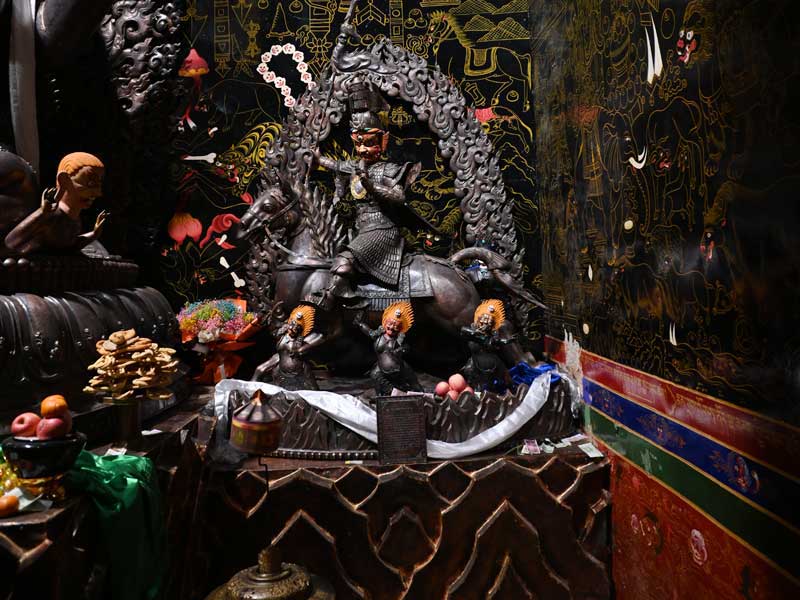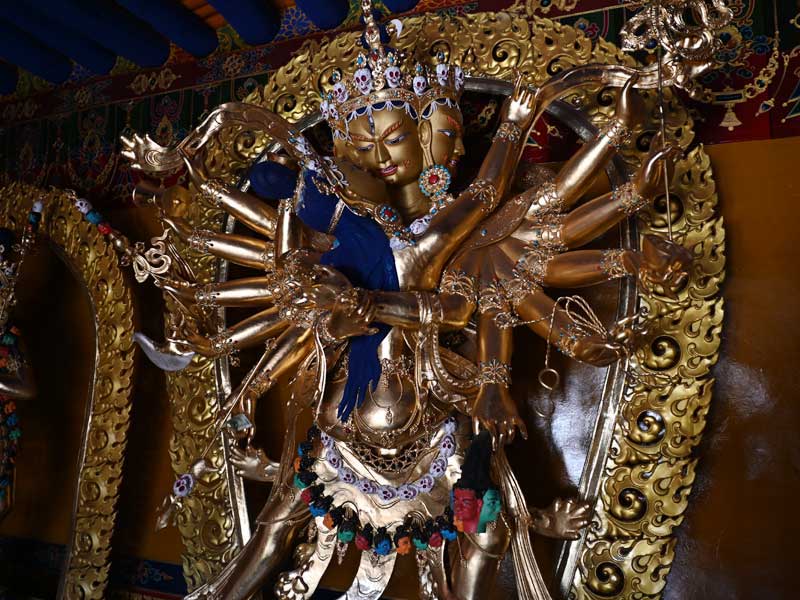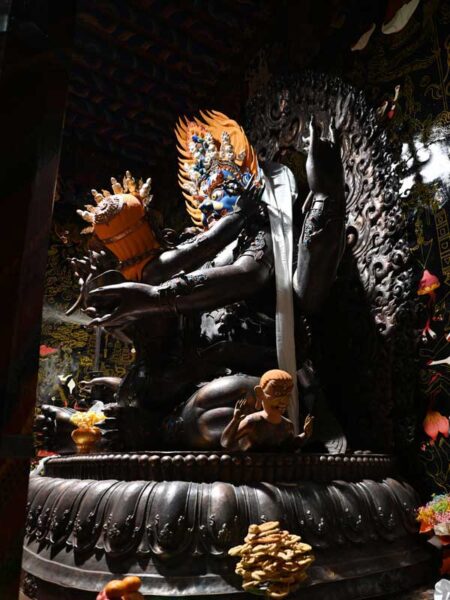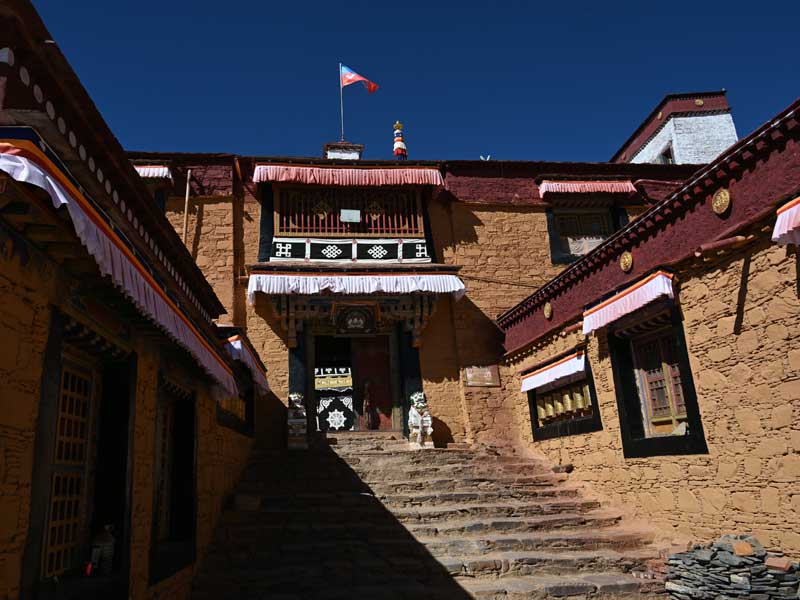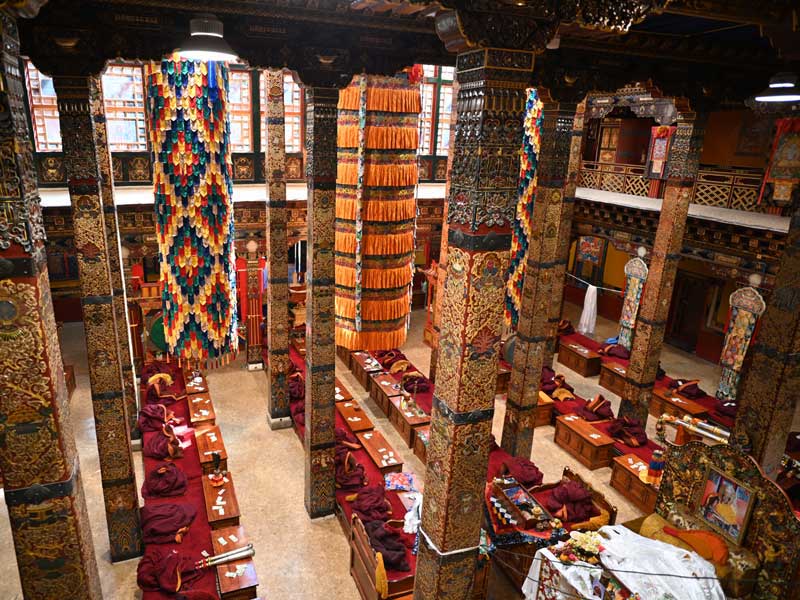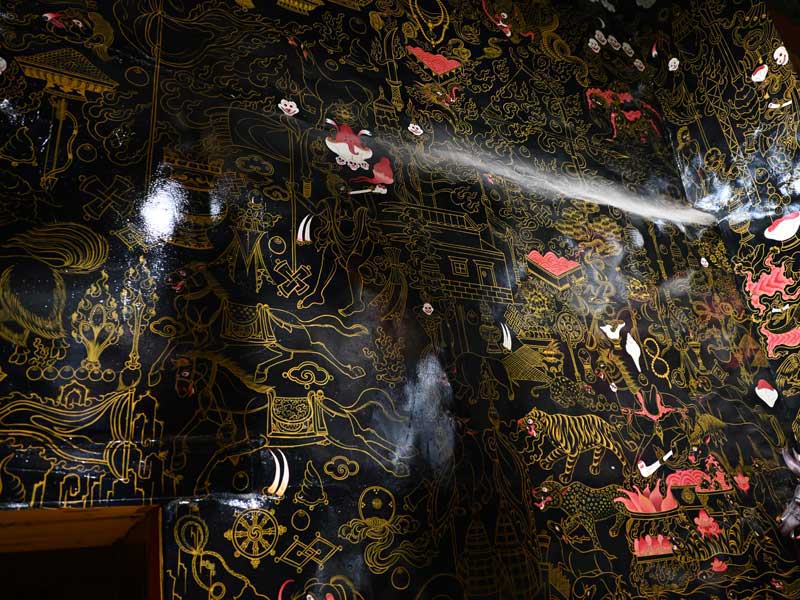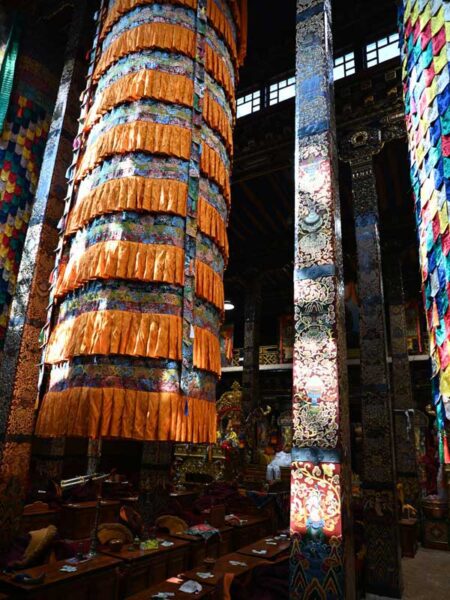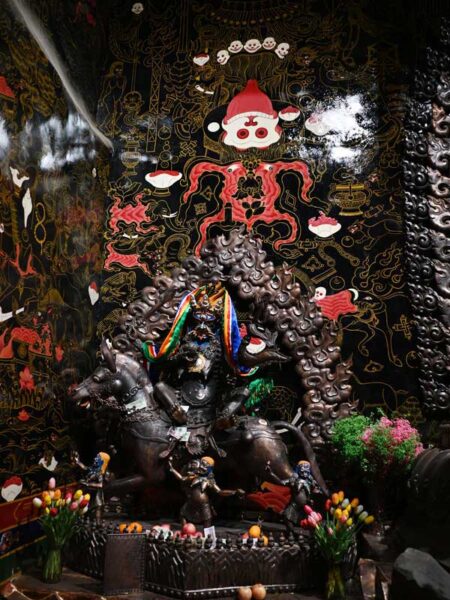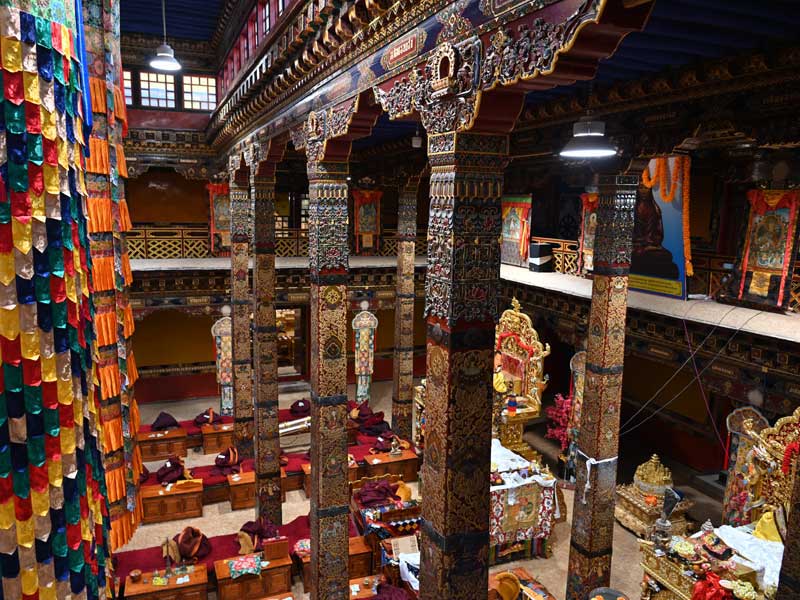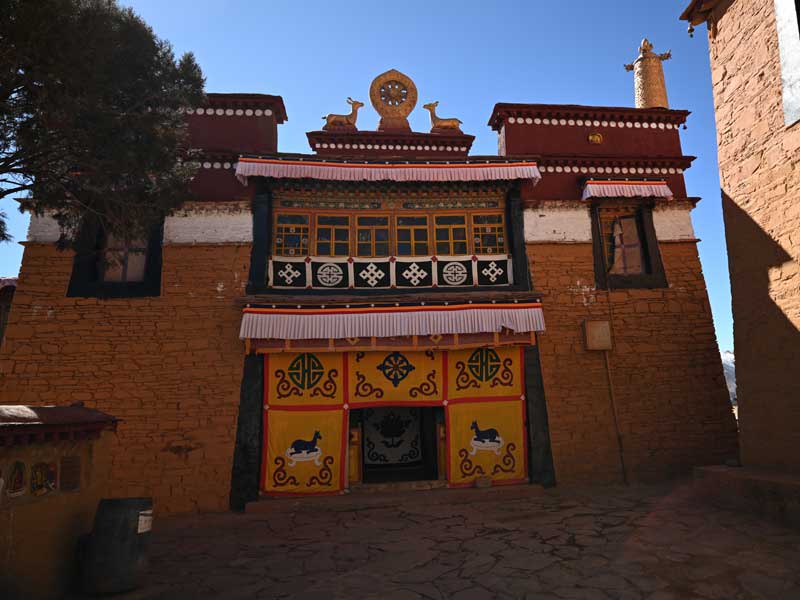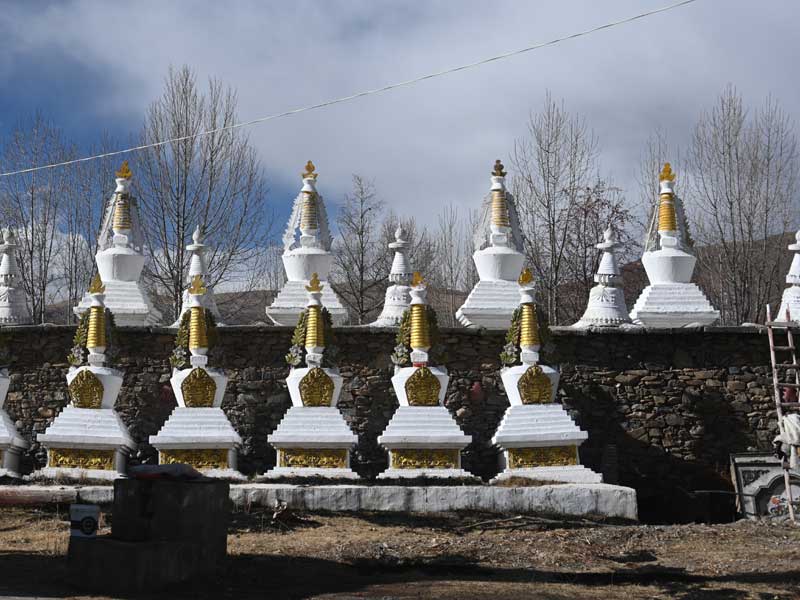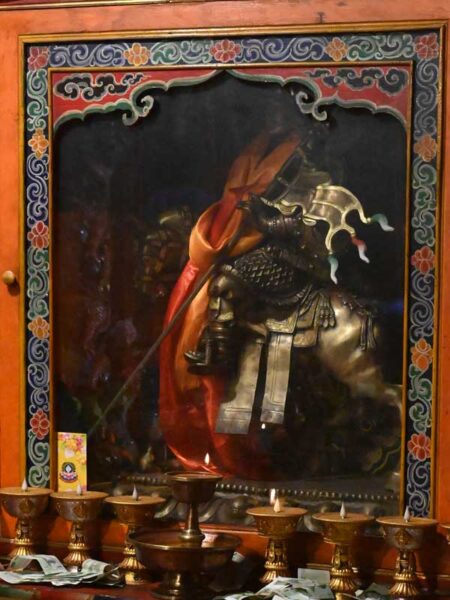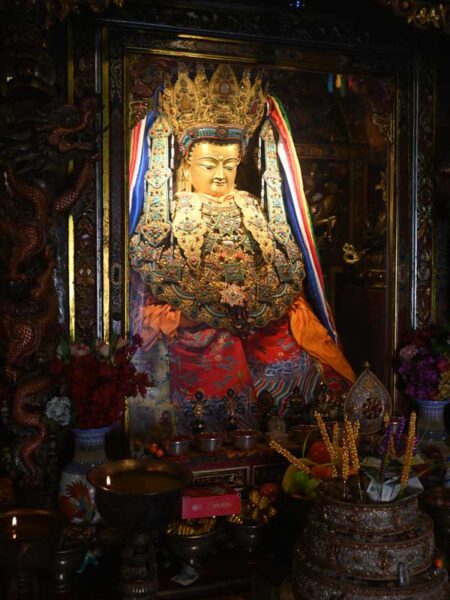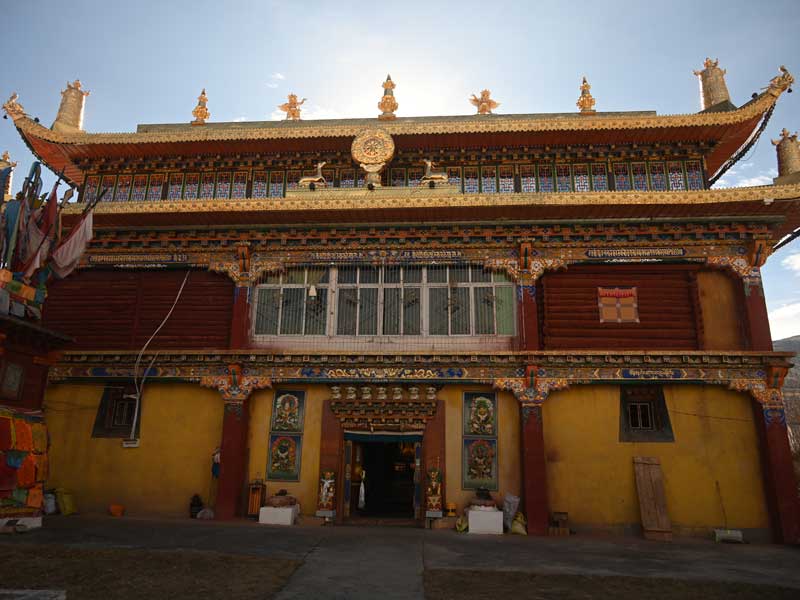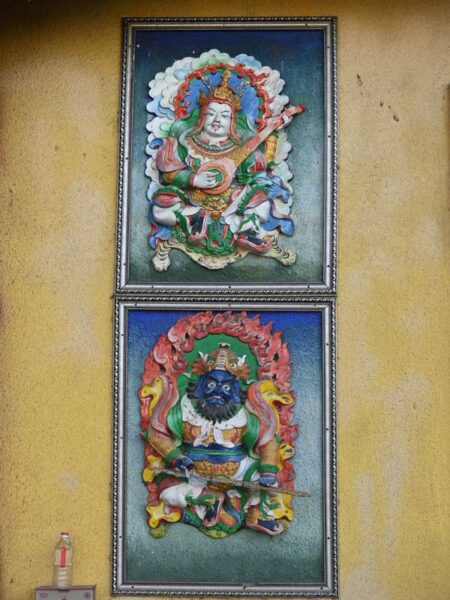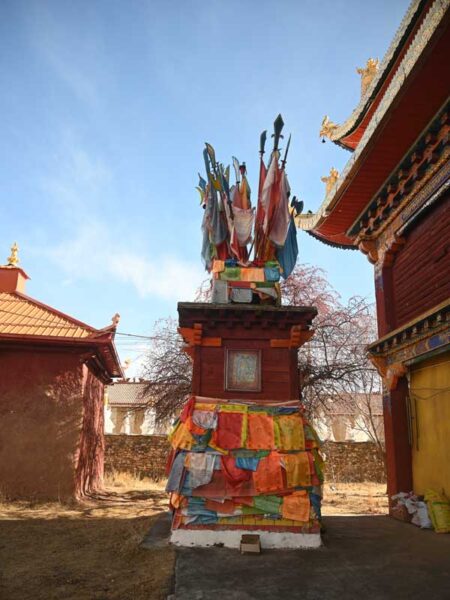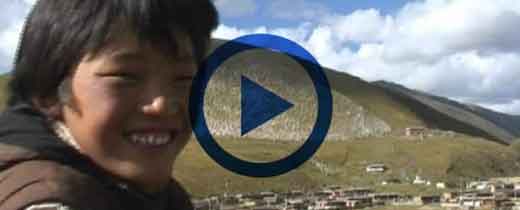Terdrom Monastery, nestled deep in a valley surrounded by towering mountains, it is a peaceful nunnery of the Kagyu tradition of Tibetan Buddhism.
The name Terdrom comes from Tibetan: “Ter” means mine and “drom” means hidden beneath—together signifying “a place where minerals lie underground.”
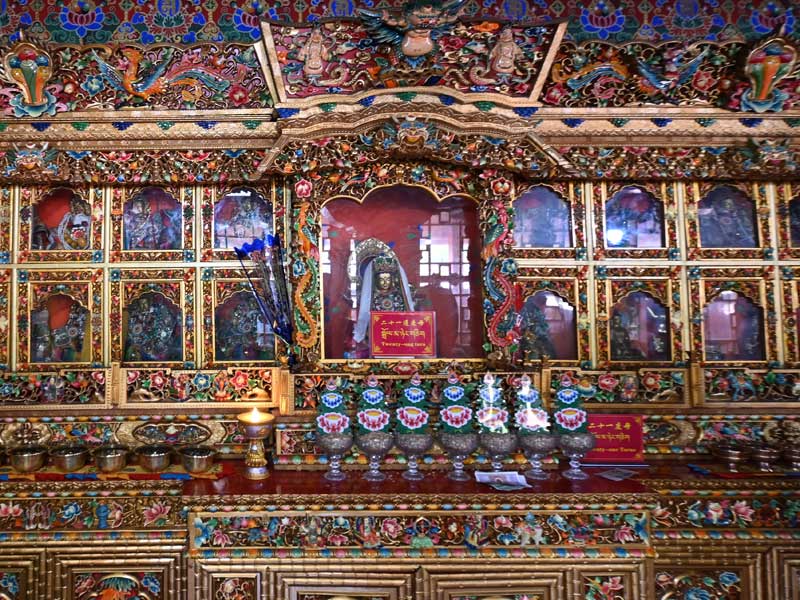
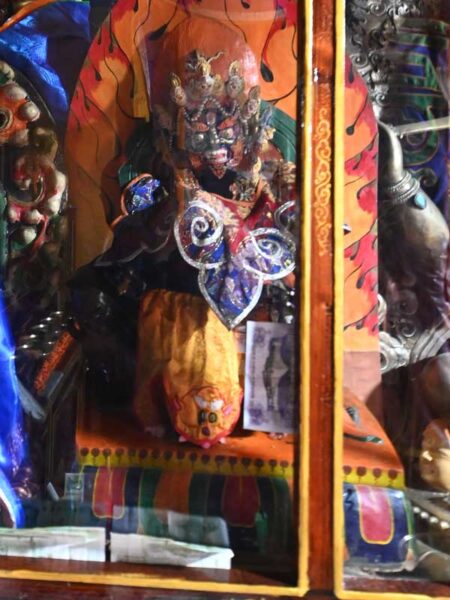
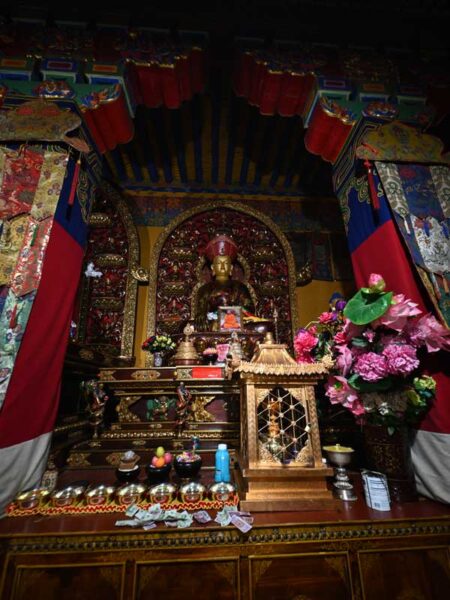
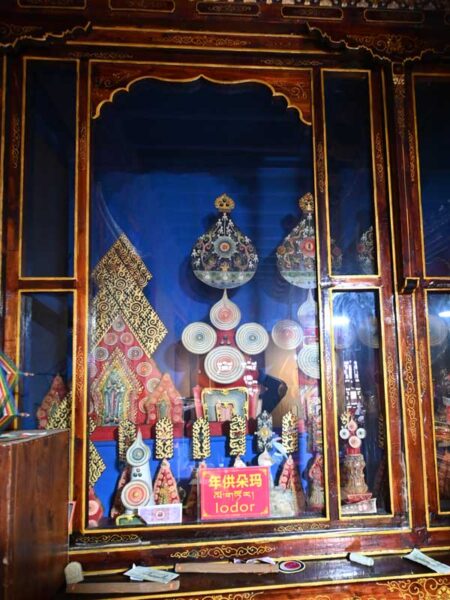
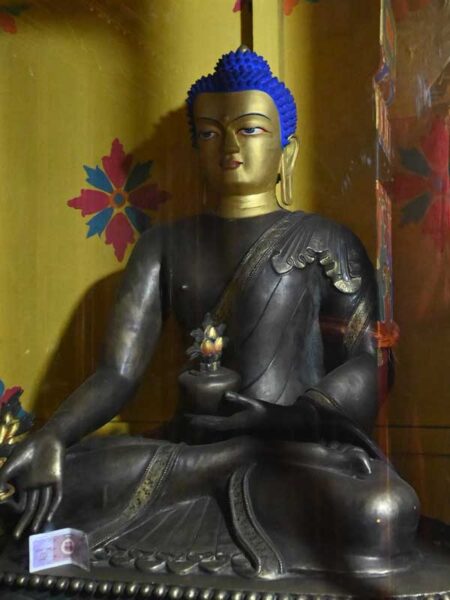
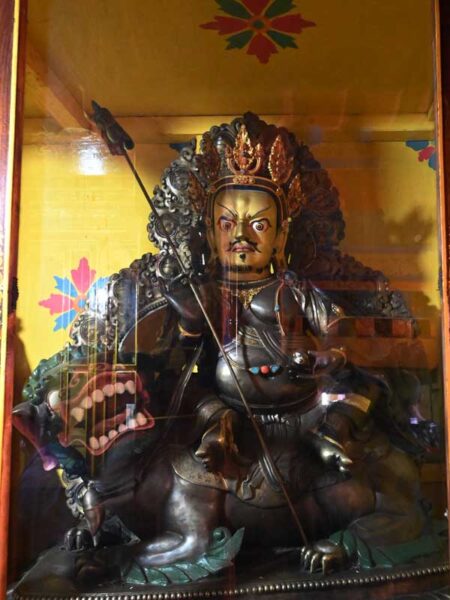

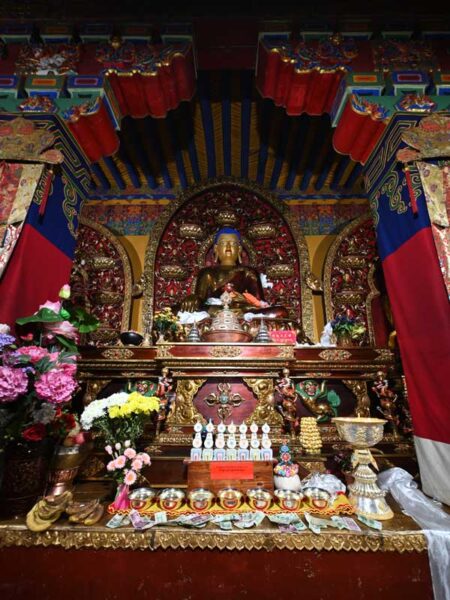
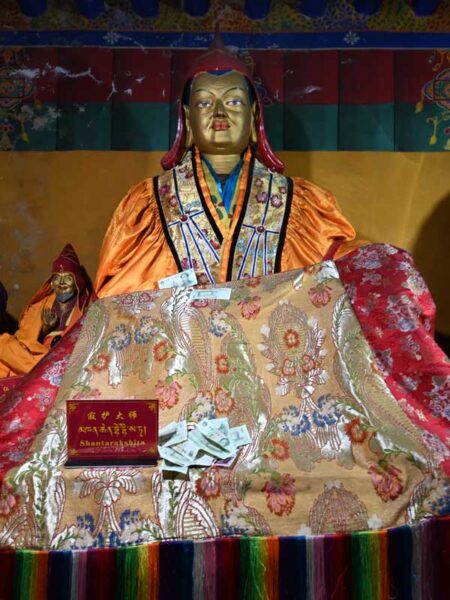
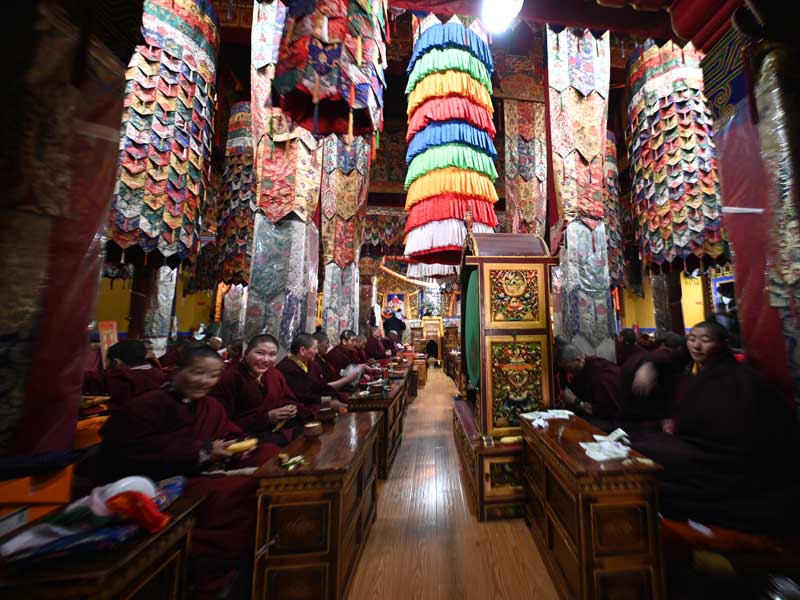
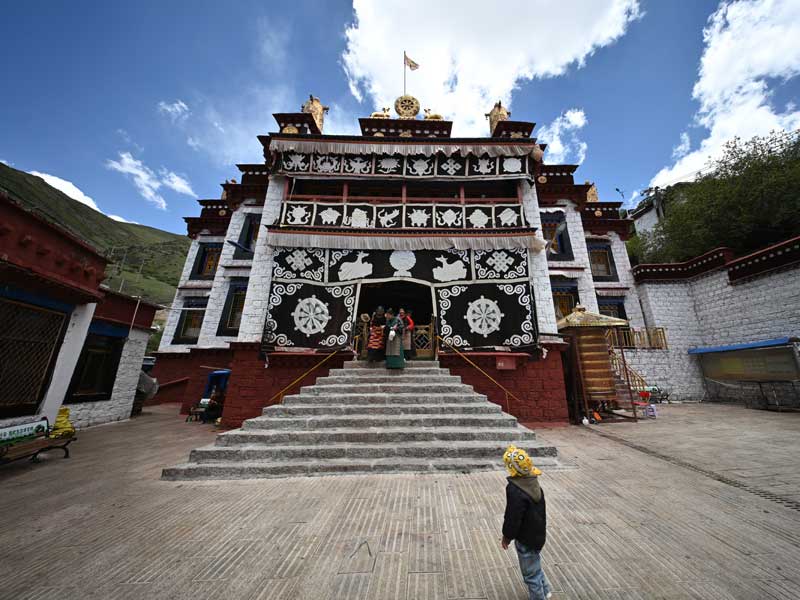
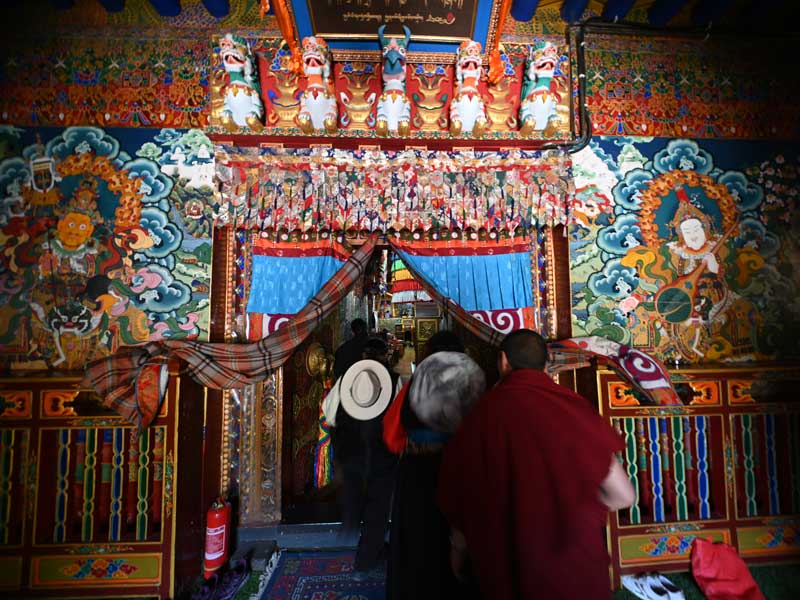
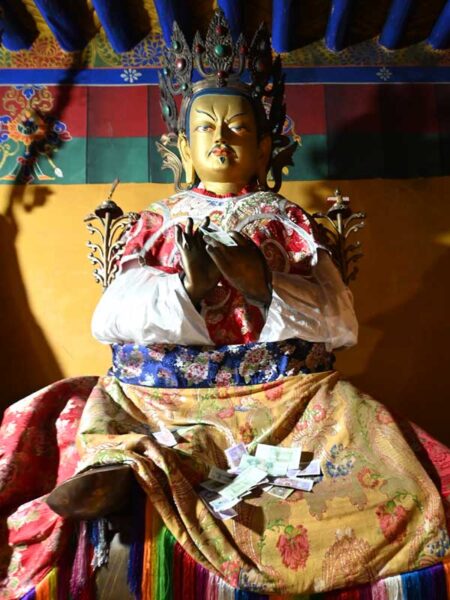
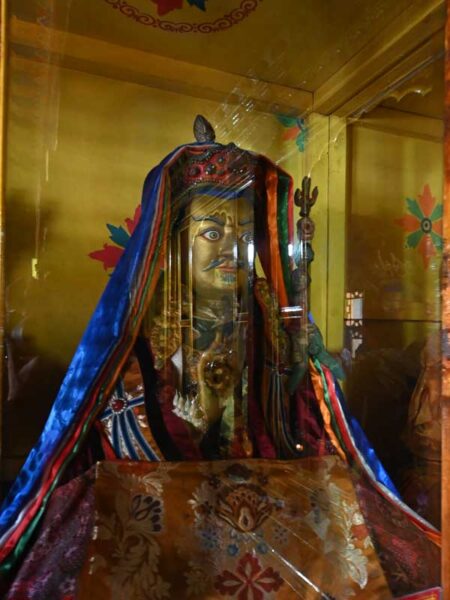
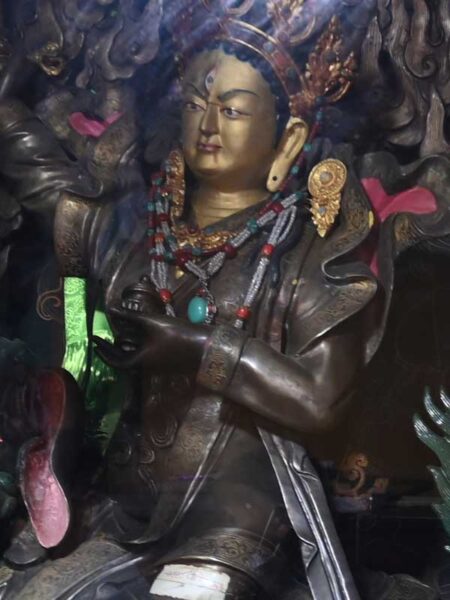
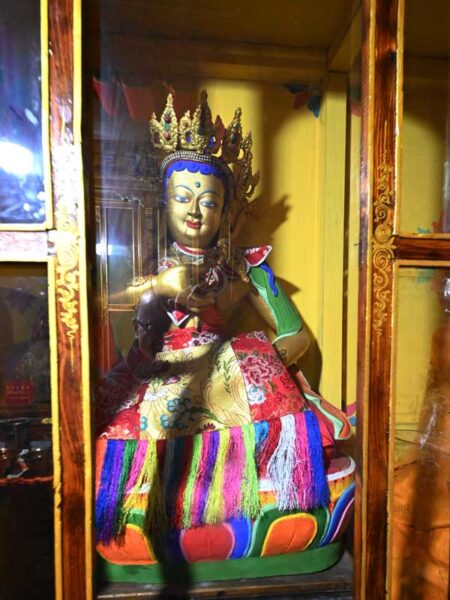
A Living Nunnery
Today, the monastery is home to around 105 nuns, the oldest being 87 years old. Their daily life follows a rhythm of spirituality and service: mornings are spent chanting scriptures and gathering firewood, while afternoons are devoted to welcoming visitors—boiling water, offering seat cushions, and renting out simple rooms. Outside, wind- and water-powered prayer wheels spin endlessly, while vibrant prayer flags bring color to the quiet valley.
Spiritual Heritage
Terdrom is closely linked to Drigung Monastery. When Drigung was first established, monks had a place to study and practice, but nuns did not. To fill this need, a nunnery was built here on Terdrom Mountain.
The site’s history stretches back to the 8th century, when the great master Padmasambhava (Guru Rinpoche) practiced meditation in a natural cave high above the valley at an altitude of nearly 5,000 meters. This cave remains an important pilgrimage site for devotees and spiritual teachers alike.
Sacred Hot Springs
Nearby, the Terdrom Hot Springs are said to have been miraculously revealed by Padmasambhava himself, striking the ground with his vajra over 1,300 years ago. Considered healing and sacred, the springs attract both pilgrims and travelers seeking relaxation.
A Holy Land
Terdrom is revered as one of the Seven Holy Sites of Jambudvīpa in Tibetan Buddhism. It is also closely associated with Yeshe Tsogyal, Padmasambhava’s consort and one of Tibet’s most important female masters. Her incarnations are believed to continue appearing here, with the current recognized incarnation, Tenzin Chodron, practicing on the mountain slopes behind the monastery.
Cultural Landscape
Together with Drigung Til Monastery, Terdrom forms a unique cultural and spiritual landscape of the Drigung region, whose name means “the land of yaks.” The area belongs to Maizhokunggar County, literally translated as “pasture on the great edge.”
Location
Terdrom Monastery lies in Terdrom Village, Menba Township, in the northern part of Maizhokunggar County, about 140 km from Lhasa and just 7 km southwest of Drigung Monastery. Nestled at an altitude of 4,500 meters, the monastery sits beside the famous Terdrom Hot Springs, making it both a spiritual and natural retreat.
Architecture & Layout
Founded in 1281 AD by the 10th abbot of Drigung Monastery, the site began with a small meditation temple and has since grown into a sacred complex centered around the Assembly Hall, surrounded by more than 60 meditation caves.
The monastery features several important structures:
- The DeshunGang Ritro, a one-story chapel supported by eight pillars, enshrining Maitreya (Jampa Buddha) and Chakrasamvara (Sri Heruka).
- Longruo Temple, another one-story hall with six pillars, dedicated to Padmasambhava, Avalokiteśvara, and Shakyamuni.
- The Main Assembly Hall, a two-story stone-and-wood building with a flat roof, housing a clay statue of Padmasambhava, rare Prajnaparamita manuscripts in gold and silver ink, and vivid murals of great Buddhist masters.
In front of the main hall stretches a wide stone-paved platform leading into the courtyard. To the west are the nuns’ kitchen and administrative offices, while the eastern hillside is dotted with hermit retreats, their ochre-red roofs peeking through the forest—offering seclusion for practitioners in search of deep meditation.
Reaching the monastery is part of the experience: from the hot spring entrance, a short climb of just thirty stone steps brings you to this serene spiritual haven.
Religious Activities
The monastery is managed by nuns and, as a Kagyu nunnery, Terdrom Monastery holds regular religious ceremonies. According to tradition, Padmasambhava once meditated in retreat here, and his practice is closely tied to the legends of the local healing hot springs. Devotees often take part in activities such as welcoming reincarnated lamas, creating a strong spiritual atmosphere.
Terdrom Hot Springs
The Terdrom Hot Springs are about one meter deep, with water temperatures staying around 40°C year-round, hence their nickname, the “Hot Springs.”
In earlier times, the springs served as a bathing place for the nuns and monks of Drigung Til Monastery, as well as a gathering spot for local villagers. With a history of over 1,300 years, they are now also open to visitors.
The springs are entirely outdoors, with pools built from rough stone walls, partially sheltered by simple coverings. The facilities are modest and rustic, blending seamlessly into nature, with a stunning backdrop of snowcapped peaks that remain white throughout the year.
Because they were blessed by Padmasambhava, the Terdrom Hot Springs are revered as one of Tibet’s Four Sacred Springs. The water is crystal clear, allowing visitors to see the exact spot where each bubble rises from underground.
The springs are divided into upper and lower sections:
- The upper hot springs, located in Terdrom Village, have three pools. One side is fenced with iron rails because of the swift river nearby, which poses a danger if not careful. These stone-built pools are separated for men and women, and bathing is traditionally done nude.
- The innermost pool is shallower, suitable for soaking the legs and feet. It is smaller in size, with higher temperatures, but is believed to offer stronger healing properties.
The hot springs flow abundantly with varying depths. Scientific studies show they contain sulfur, gypsum, and other minerals beneficial to health. The water is said to help with conditions such as stomach ulcers, tumors, and rheumatic arthritis.
At the bottom of the pools, several bubbling outlets release fresh spring water. The water is clear, odorless, and ideal for bathing.
South of the pools stands a remarkable calcified wall, about 30 meters high, 120 meters long, and 50 meters wide at the base. The river has eroded an opening at its foundation, creating a natural bridge. Across the top runs a fissure about half a meter wide, through which the spring water emerges.
Legends of Terdrom Hot Springs
Though geologically formed by geothermal forces, the hot springs are steeped in legend. One tale tells of an evil spirit who, after Terdrom Monastery was built, tried to destroy it by creating a poisonous spring to flood the temple. The protective goddess of Drigung attempted to stop him by splitting the northern mountain in two, hoping the toxic water would flow away.
At that time, Padmasambhava was meditating in a cave nearby. Seeing her struggle, he decided to help. With his vajra, he struck a hole into the mountain, allowing the poison water to drain away. But as it flowed downstream, it still threatened all living beings. Padmasambhava then performed rituals, placing detoxifying minerals at the bottom of the spring, transforming the poison into healing waters that continue to flow today.
